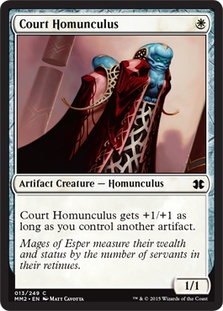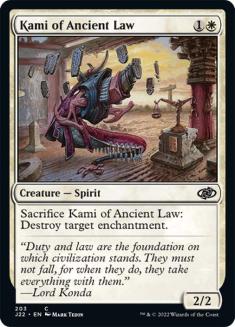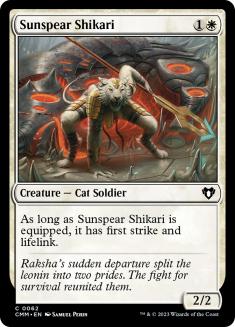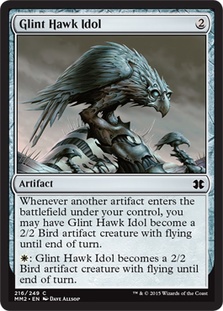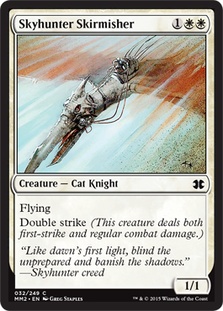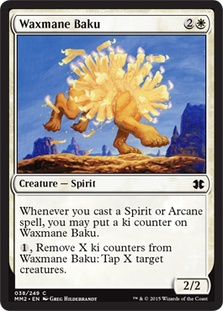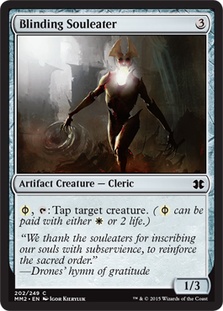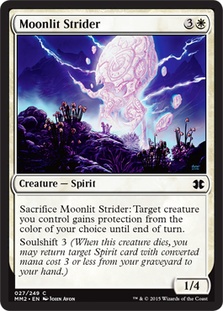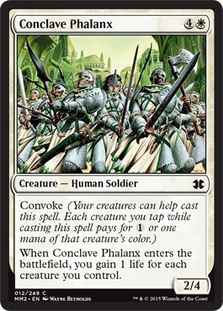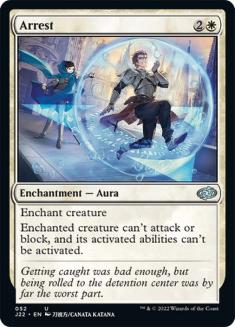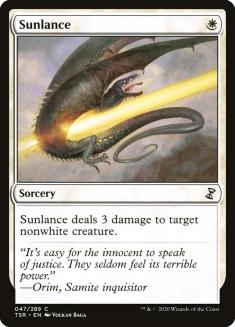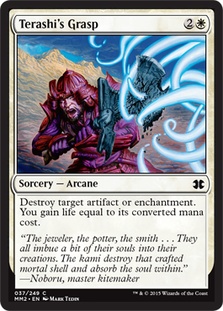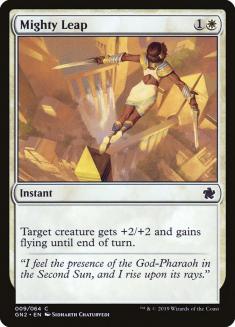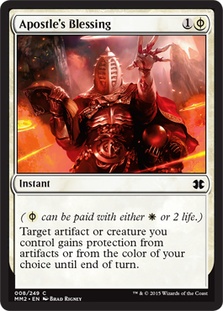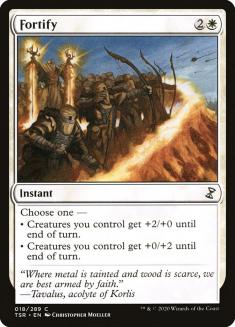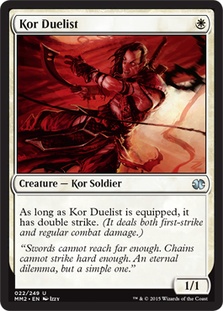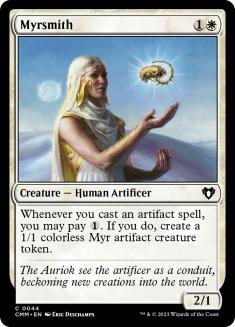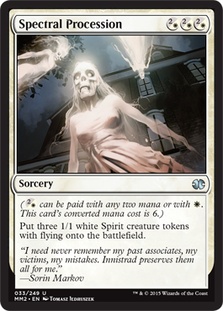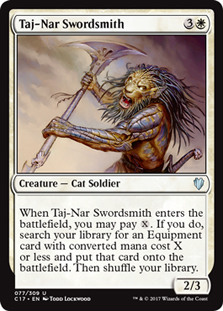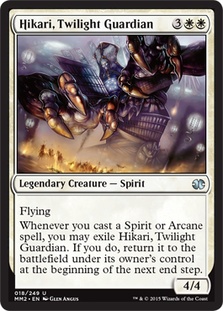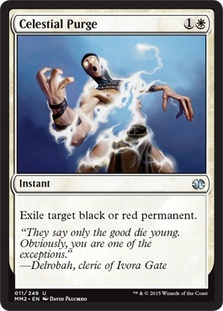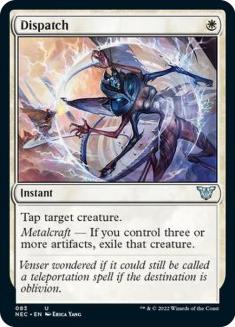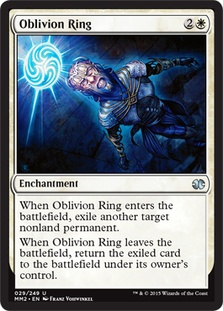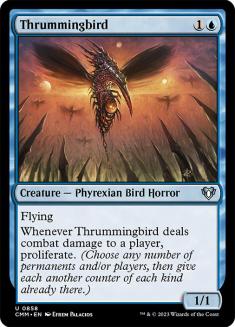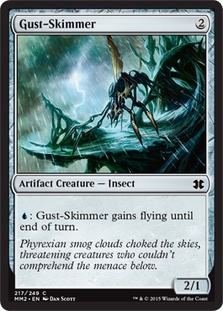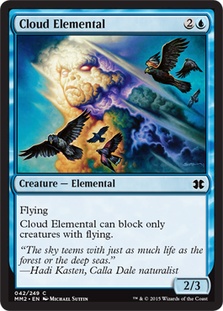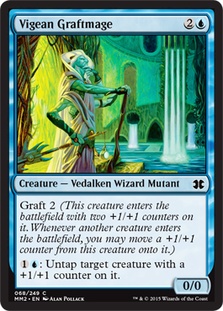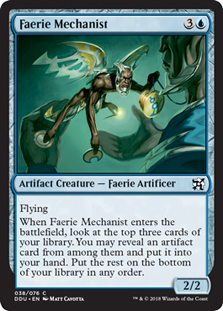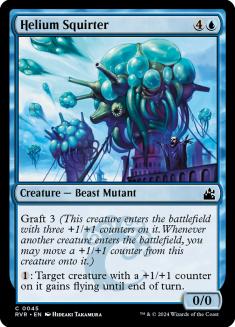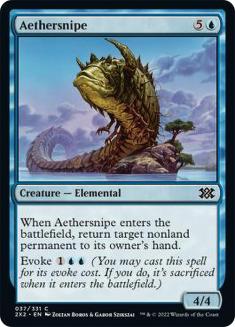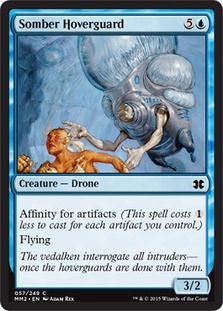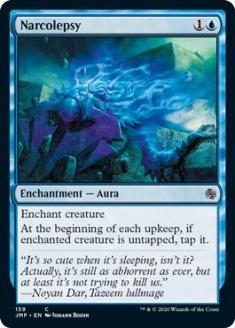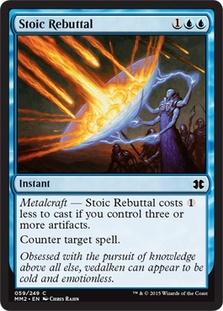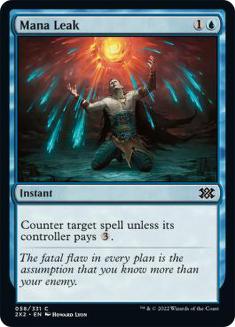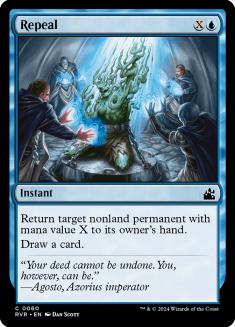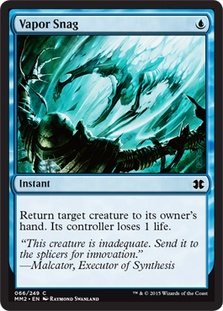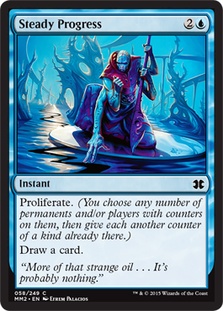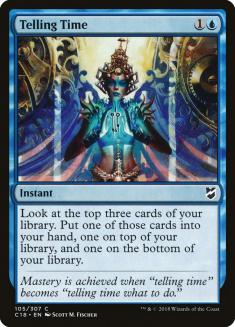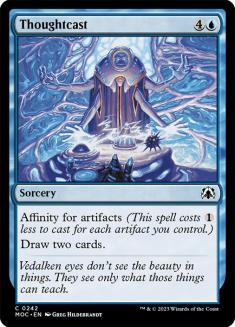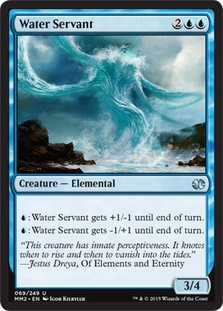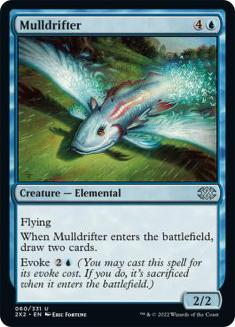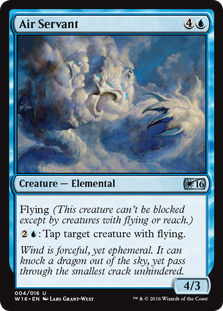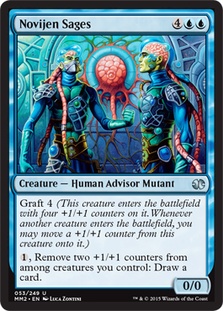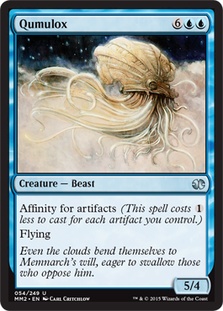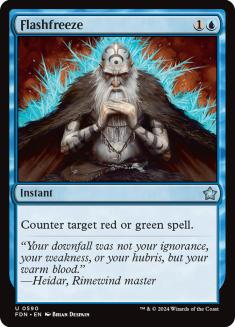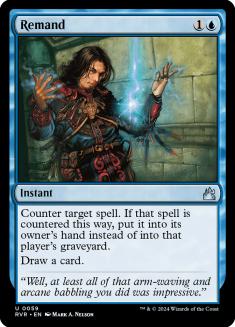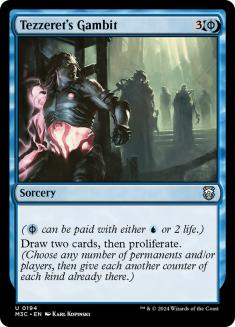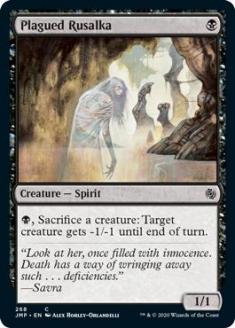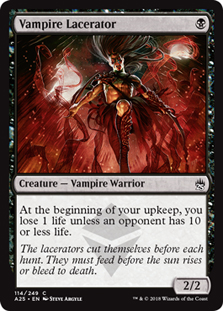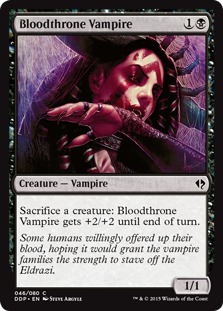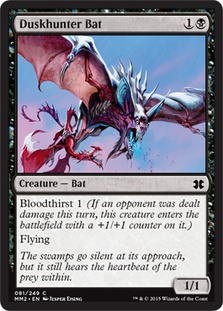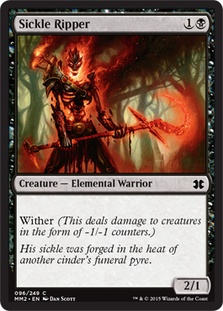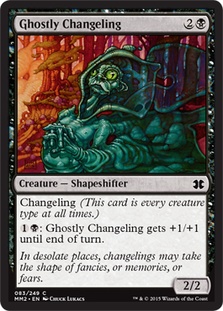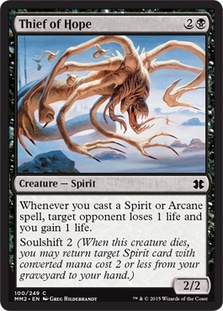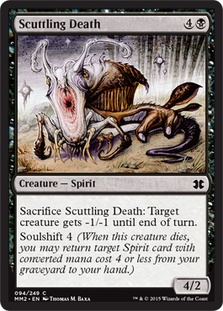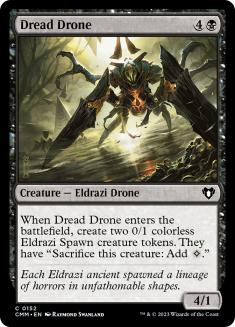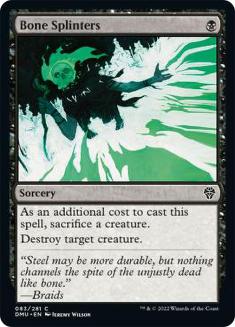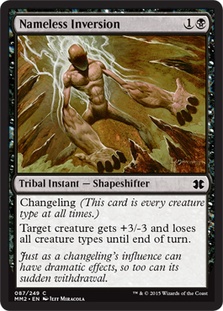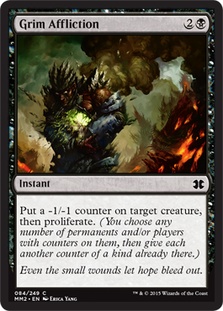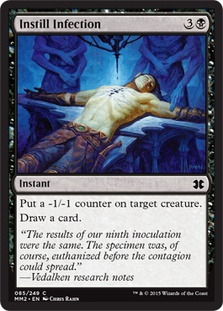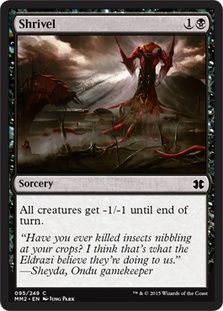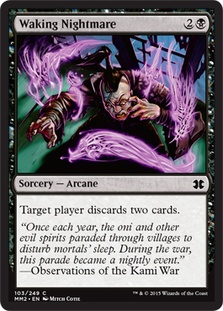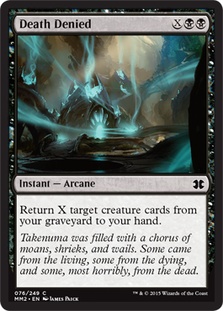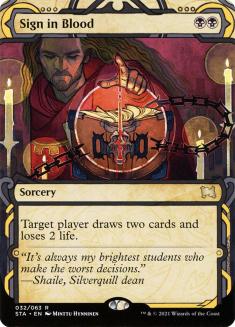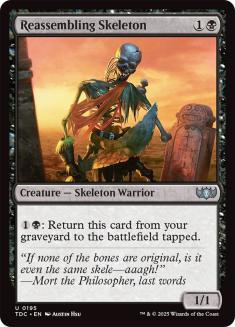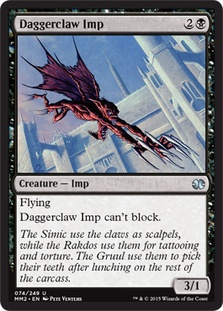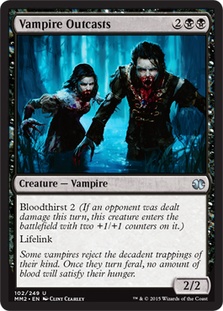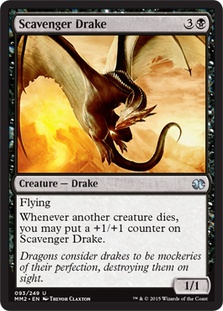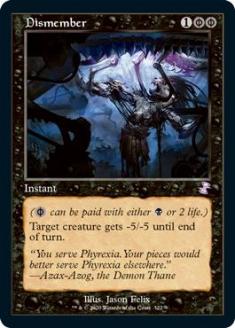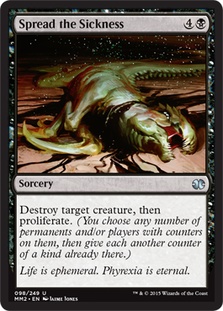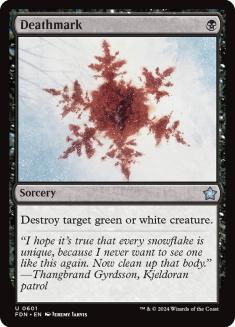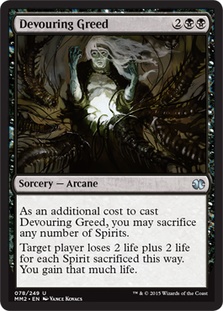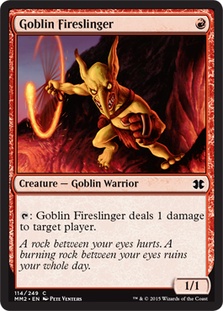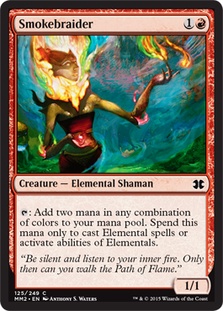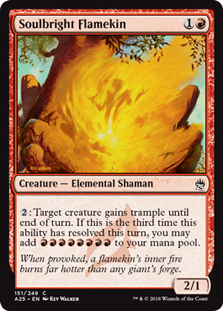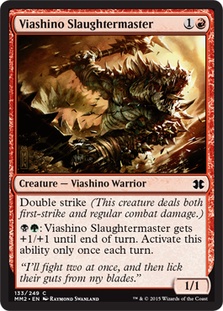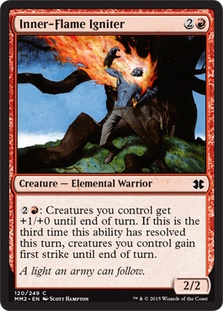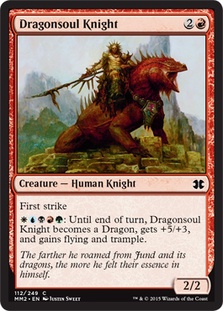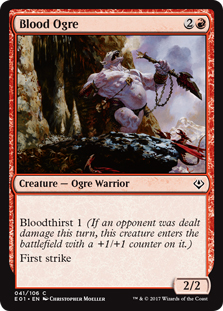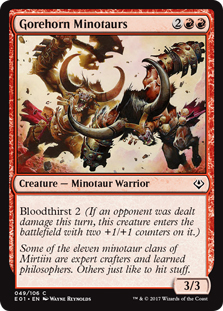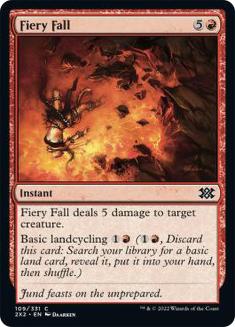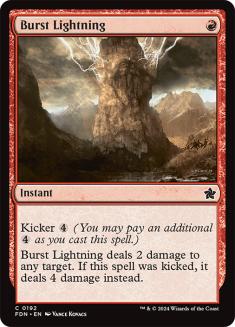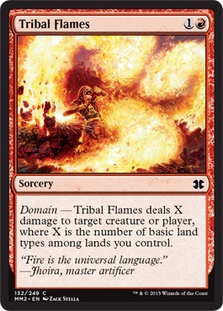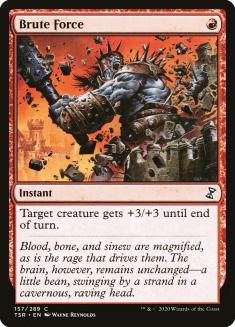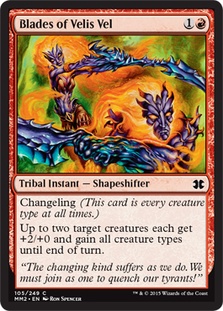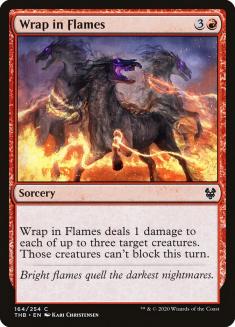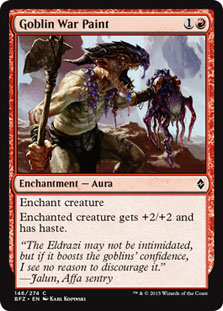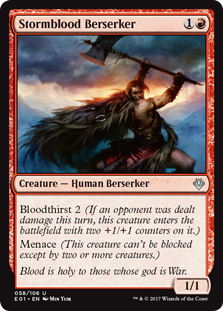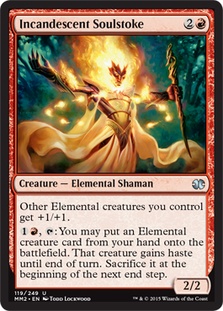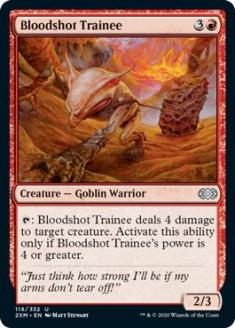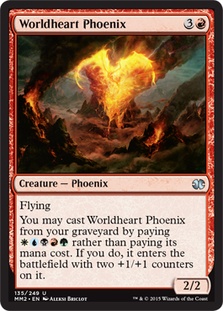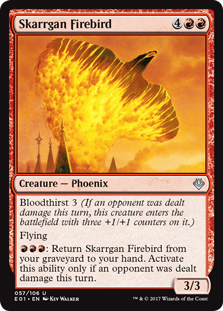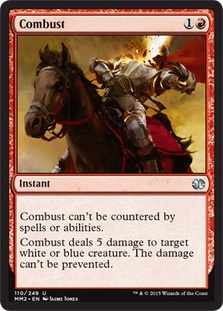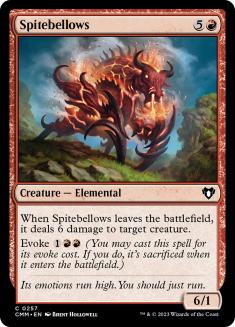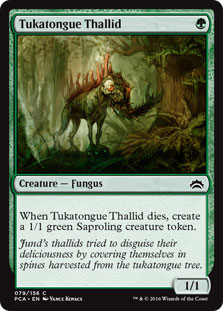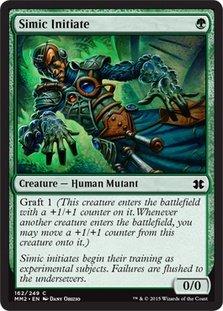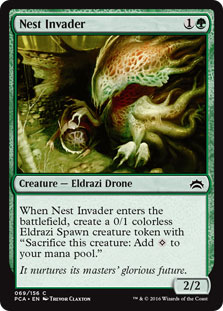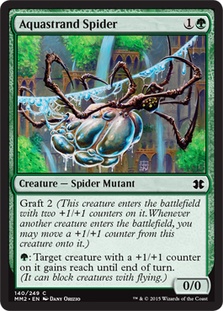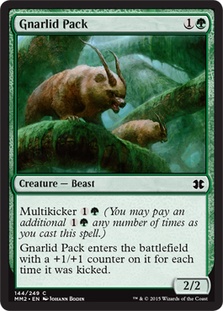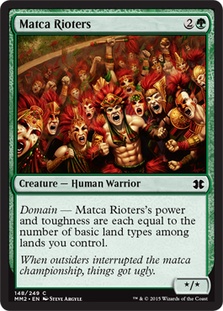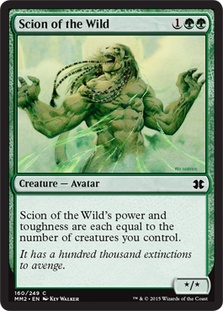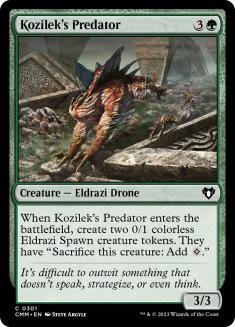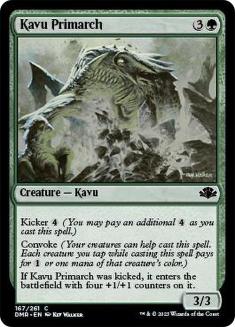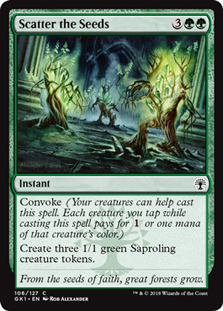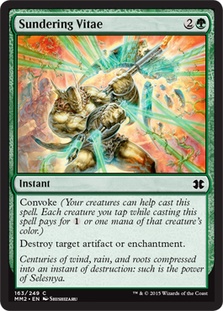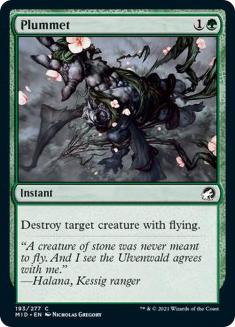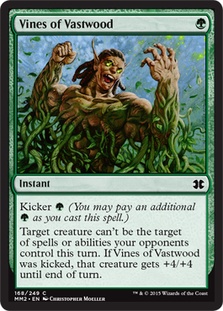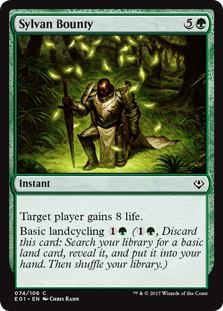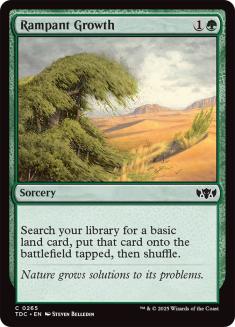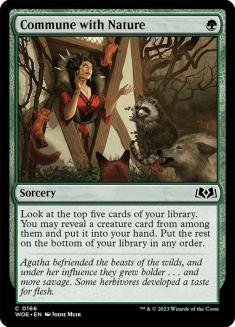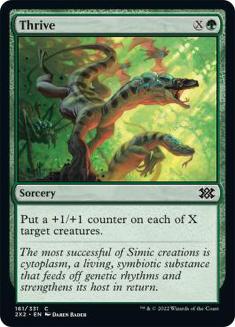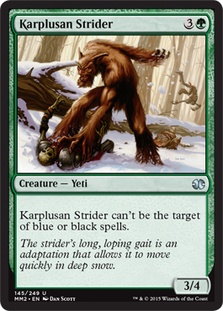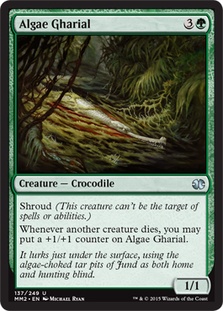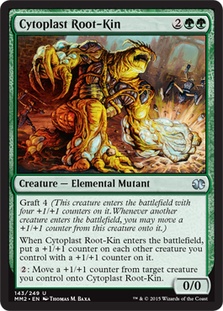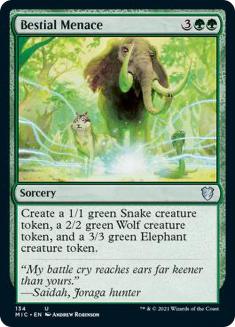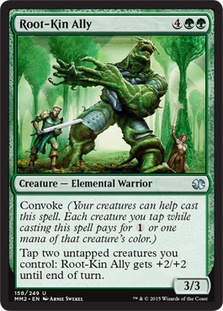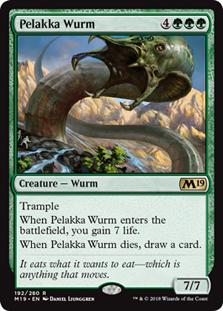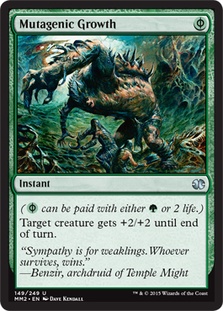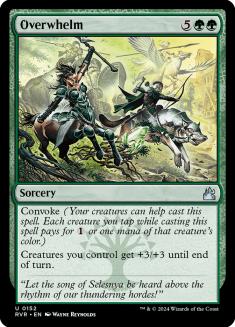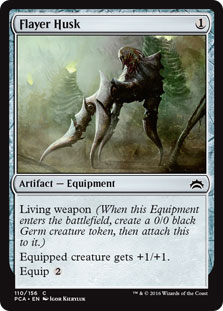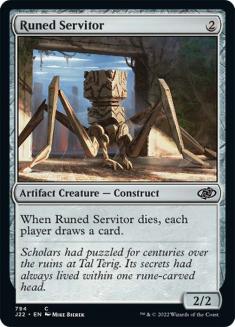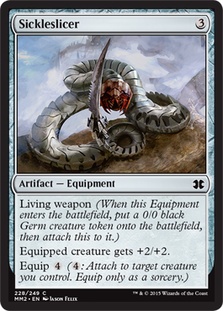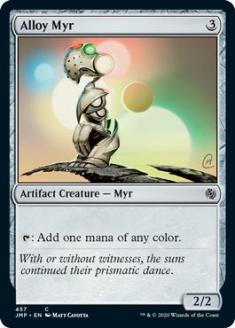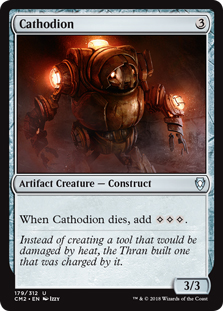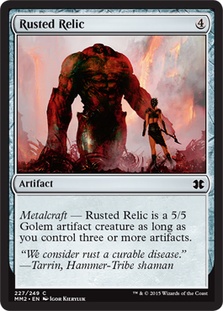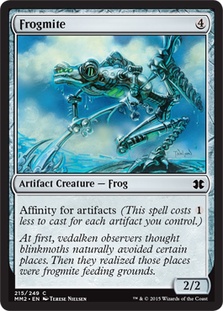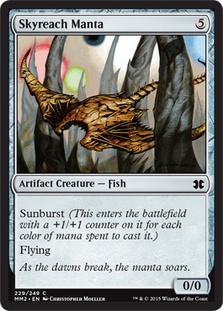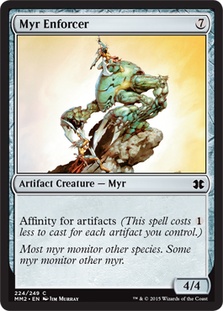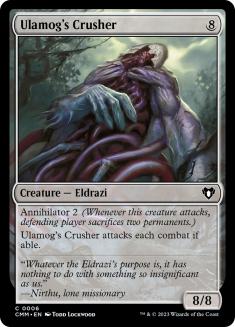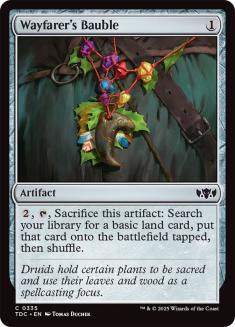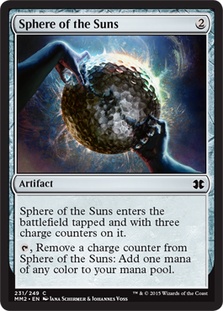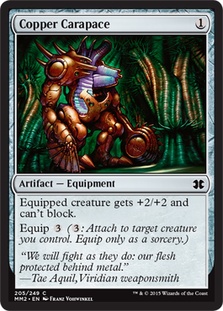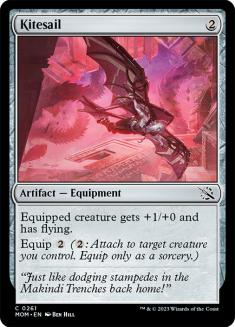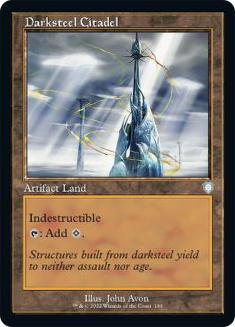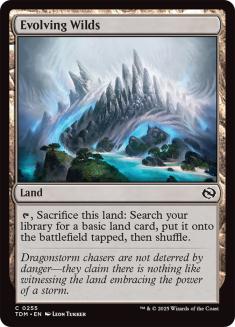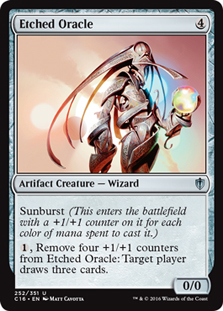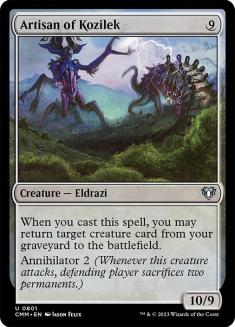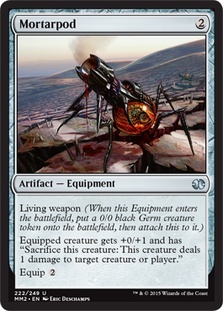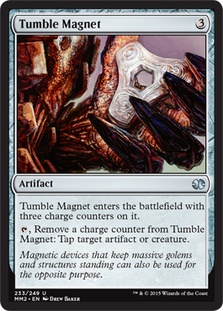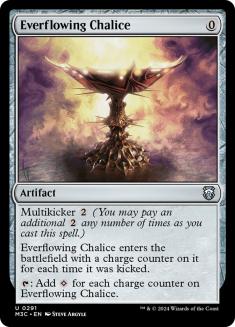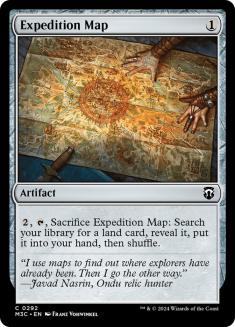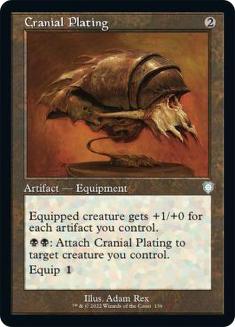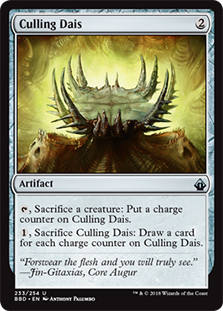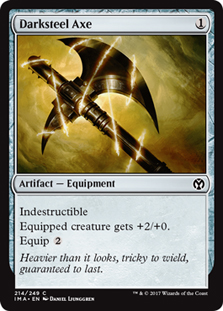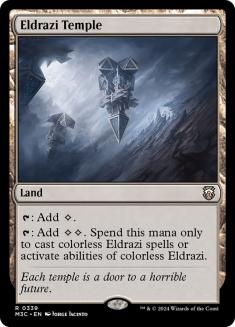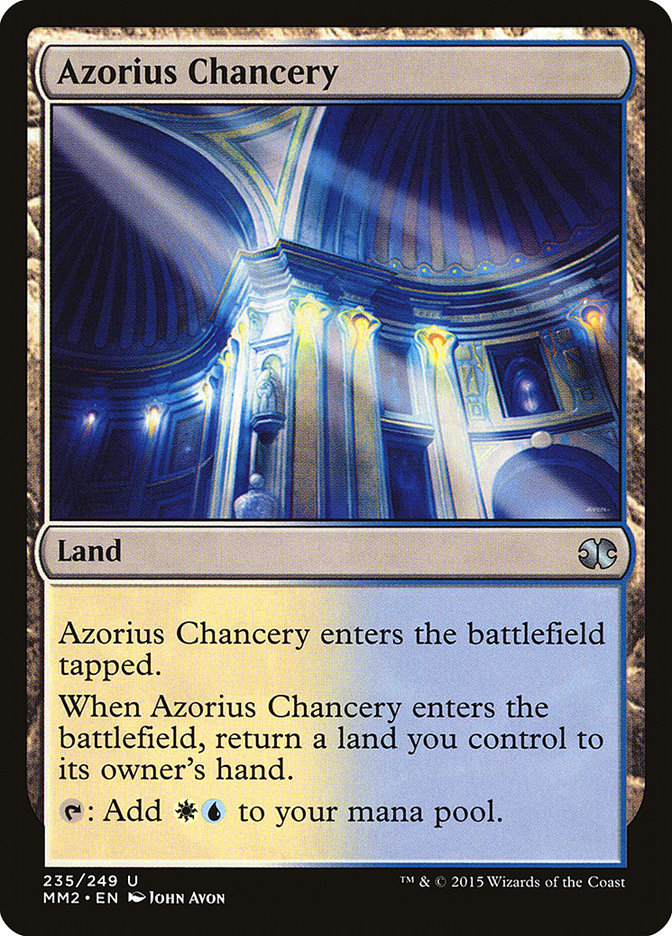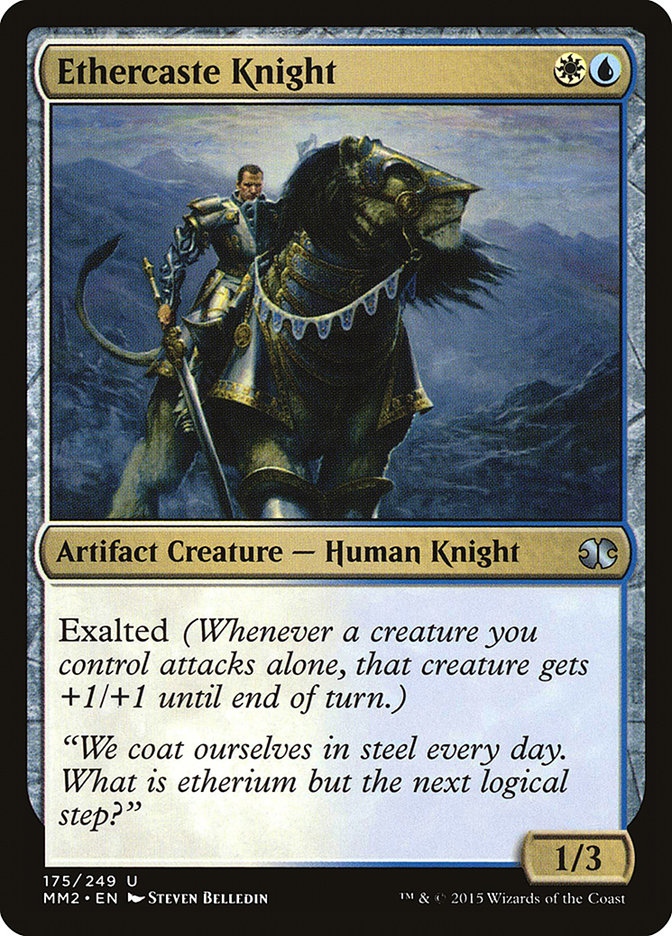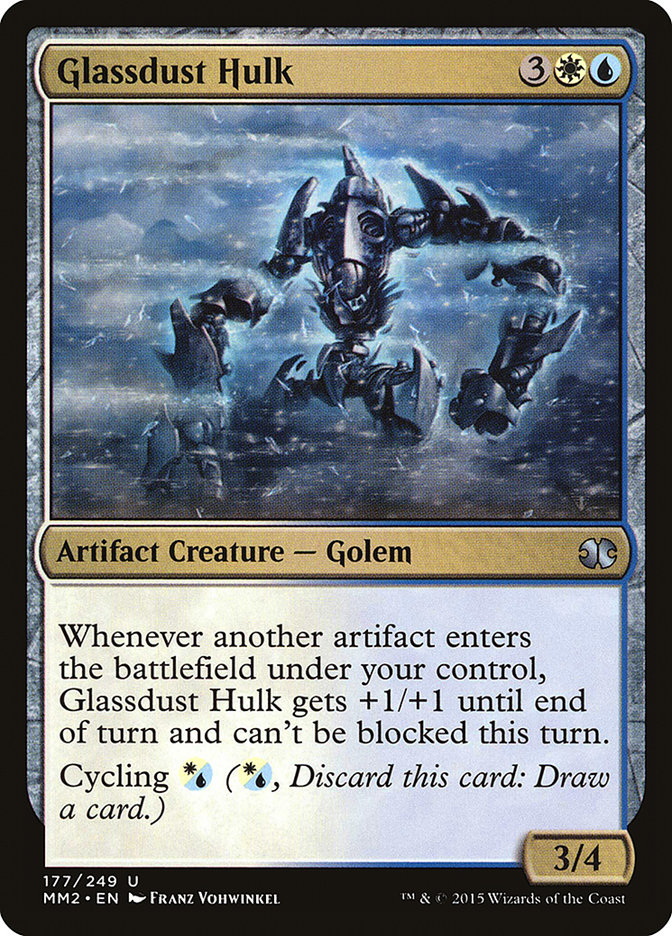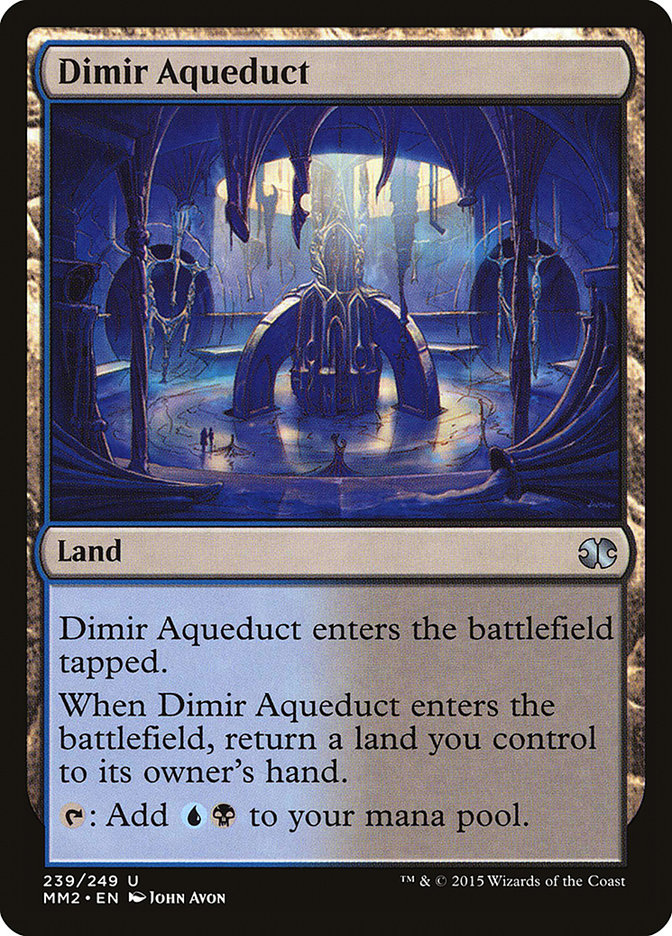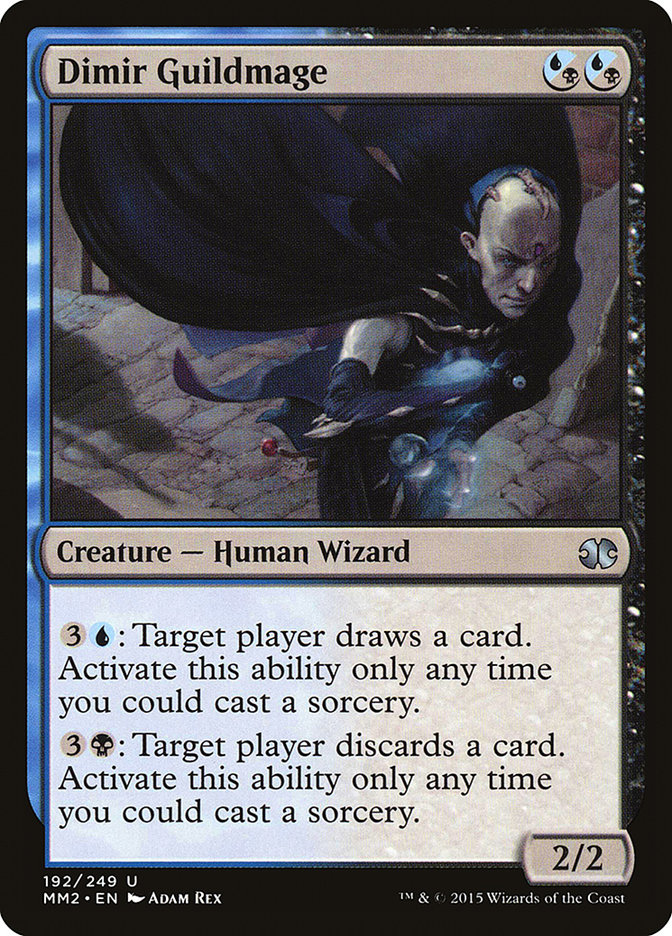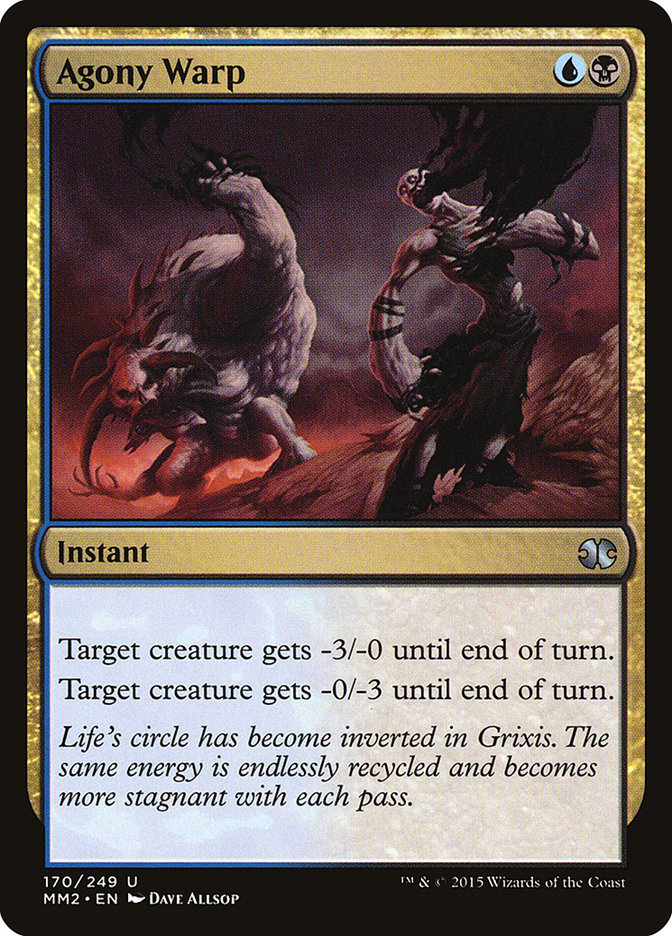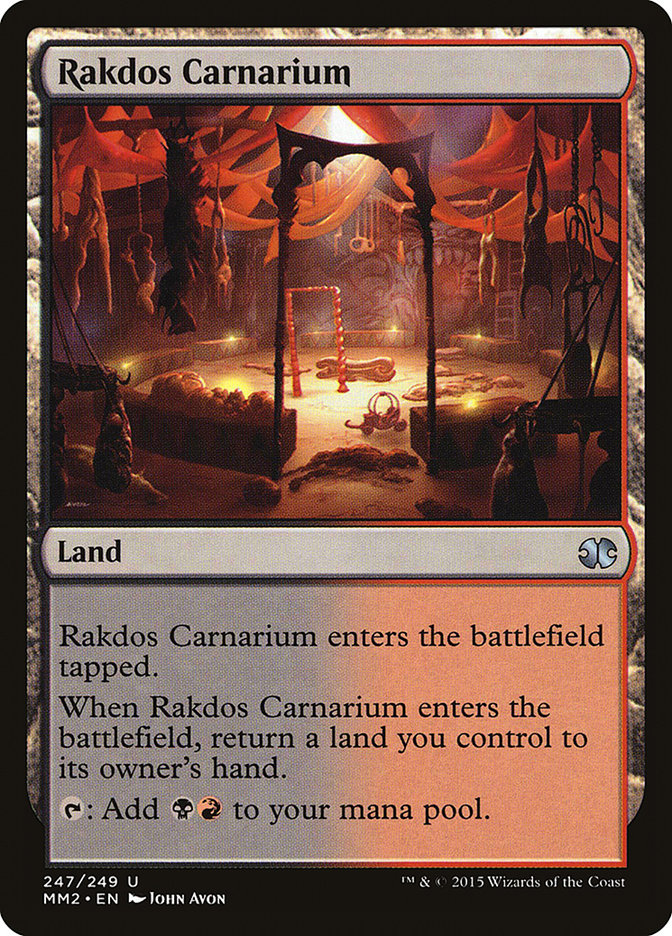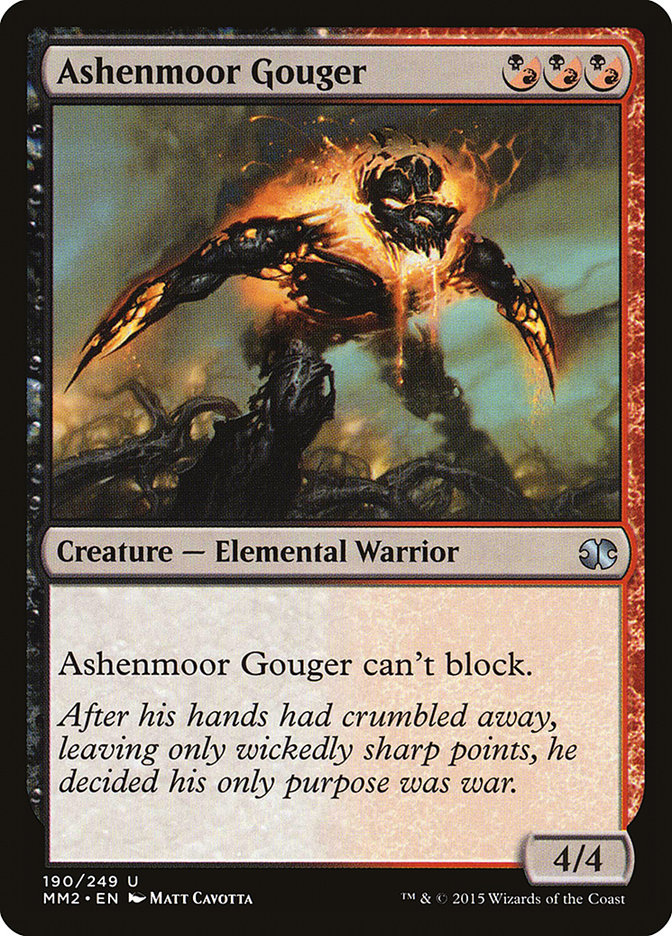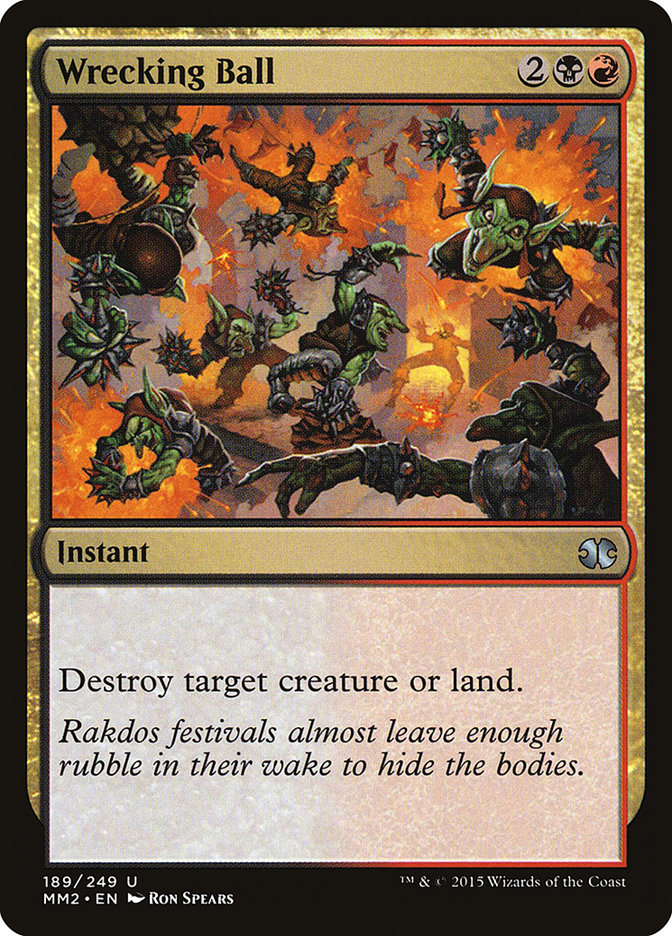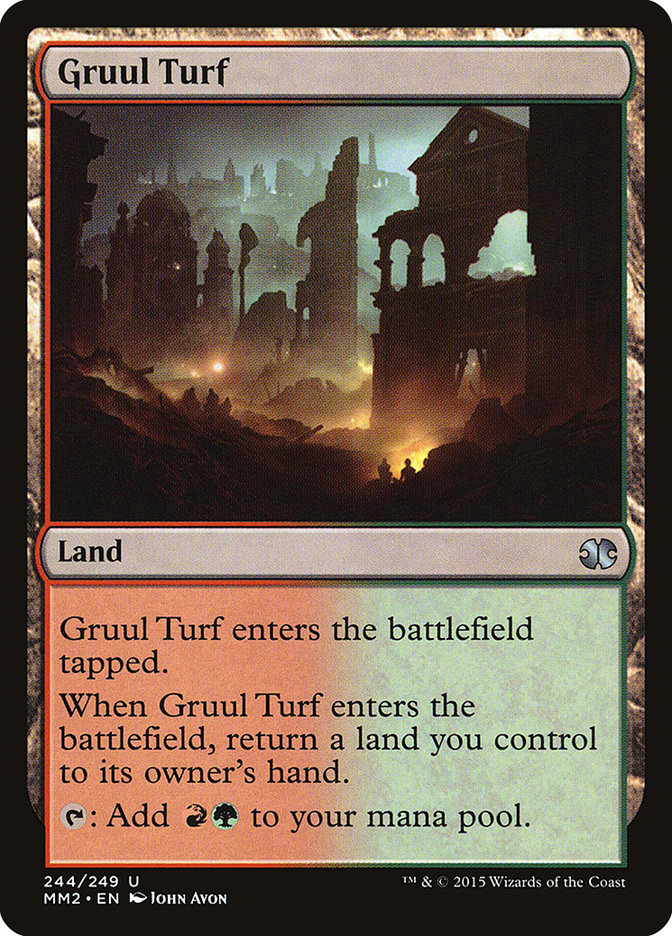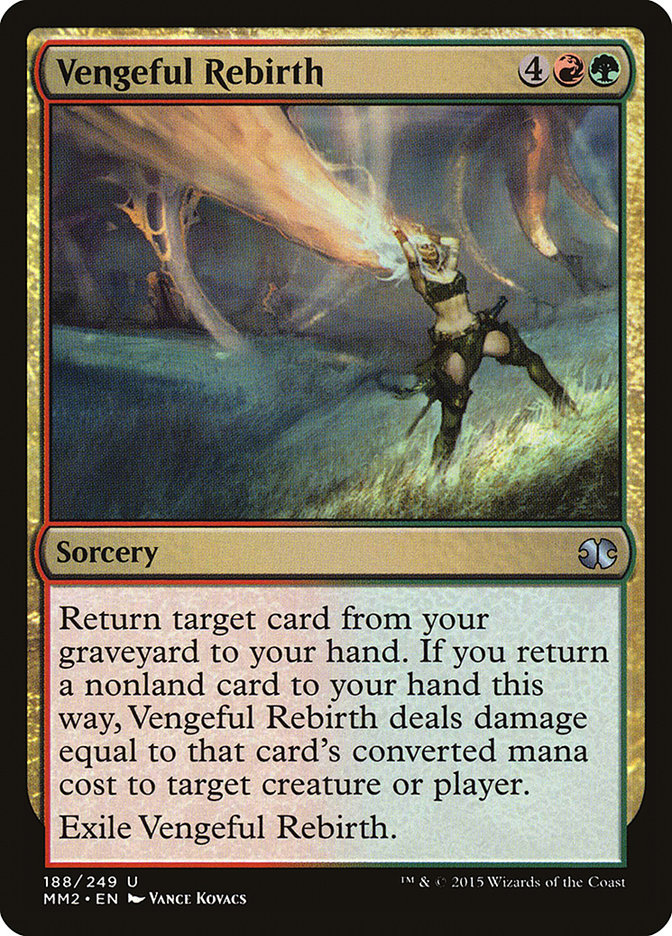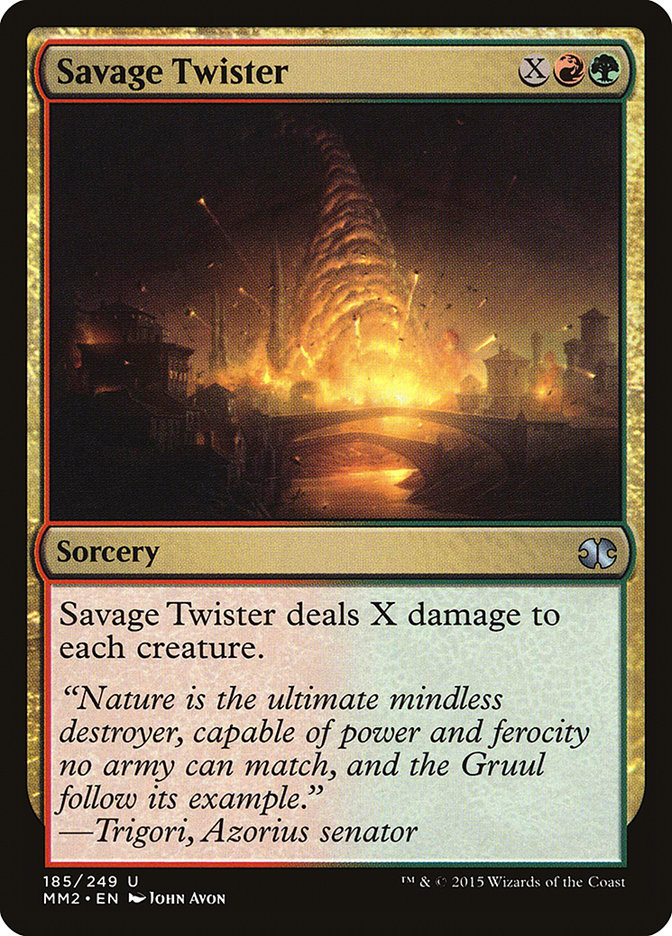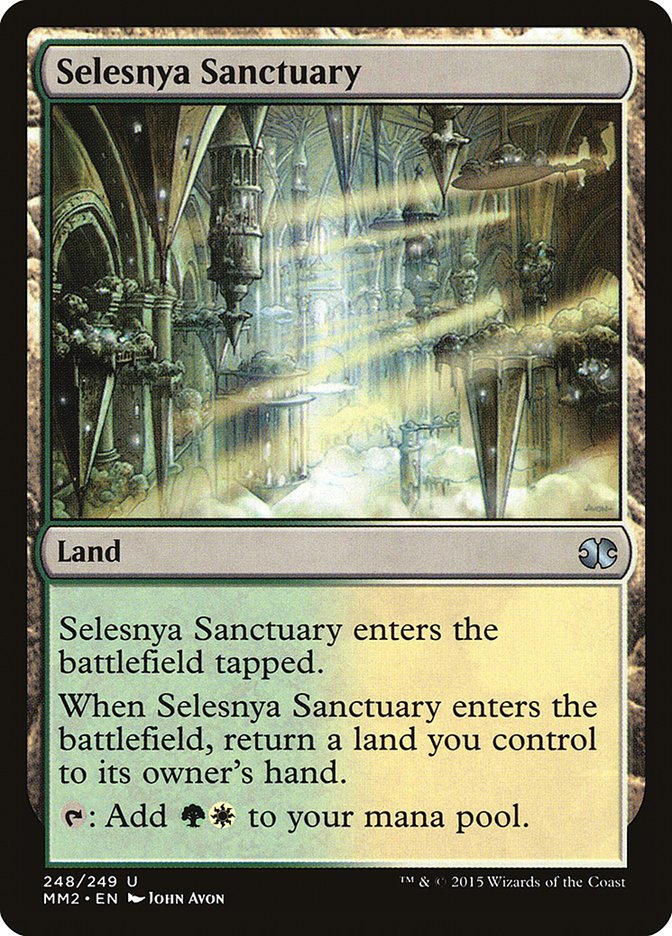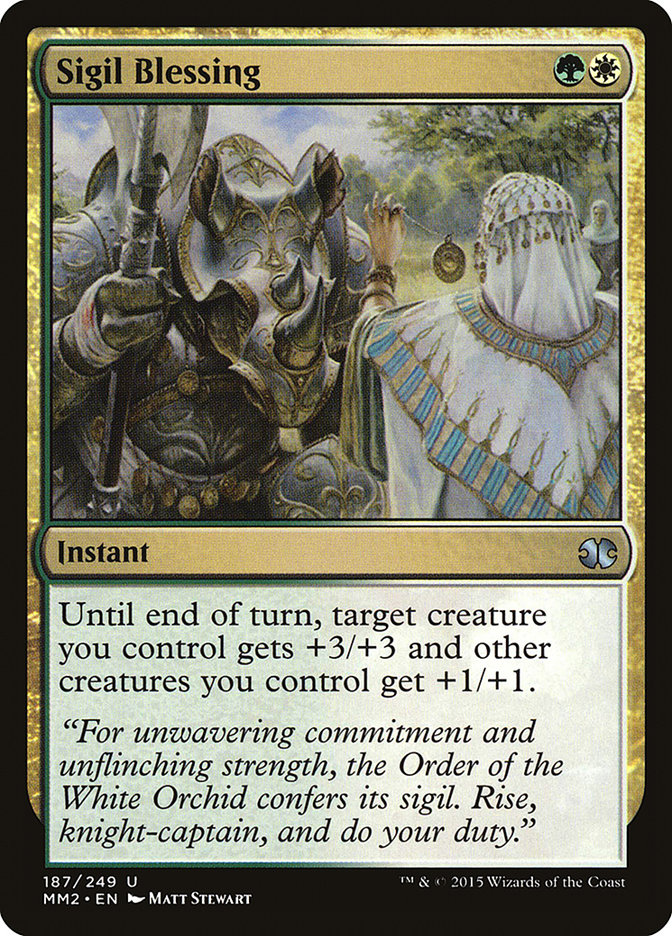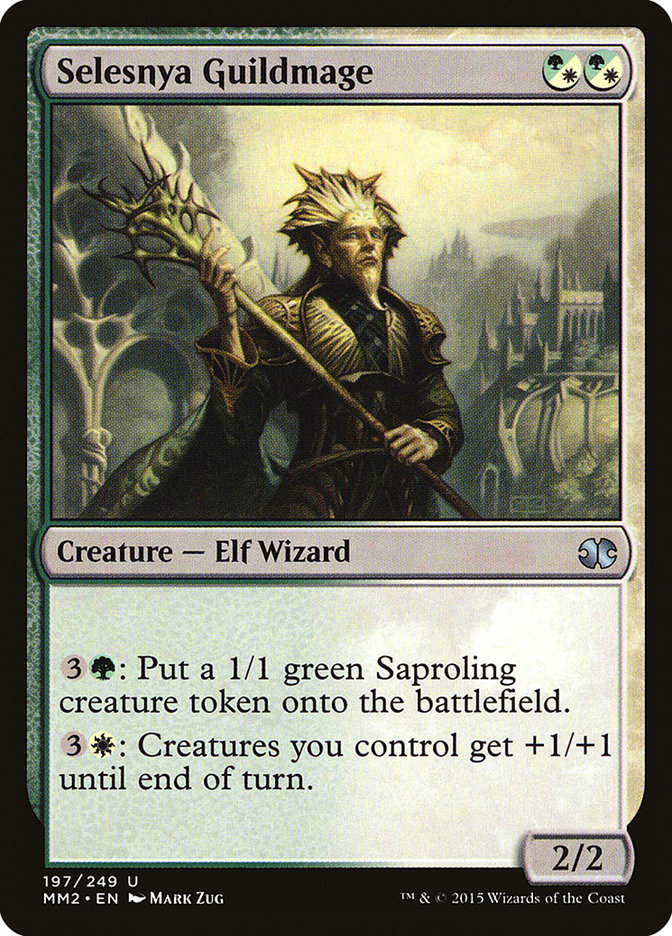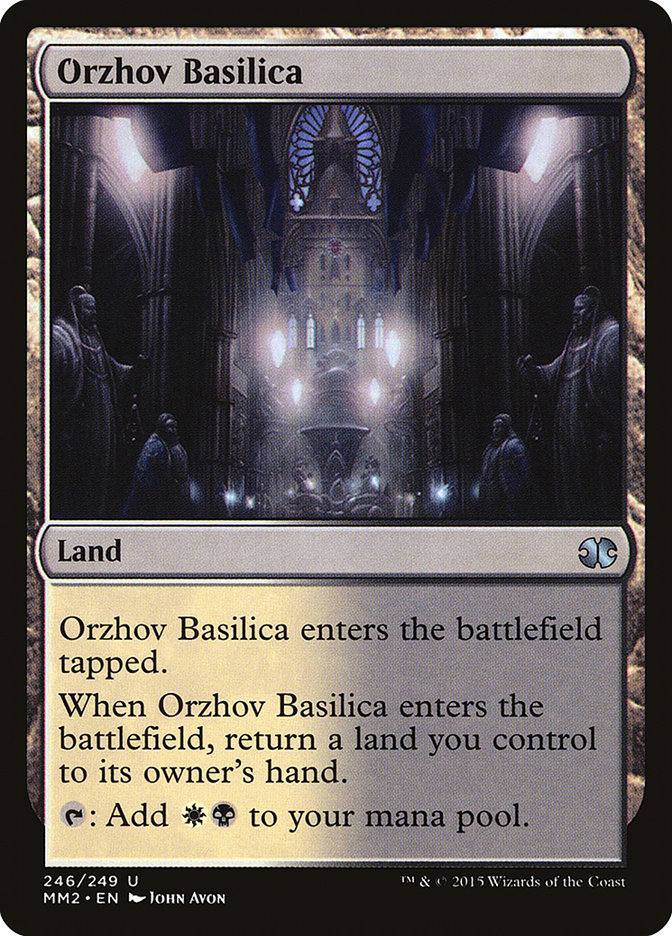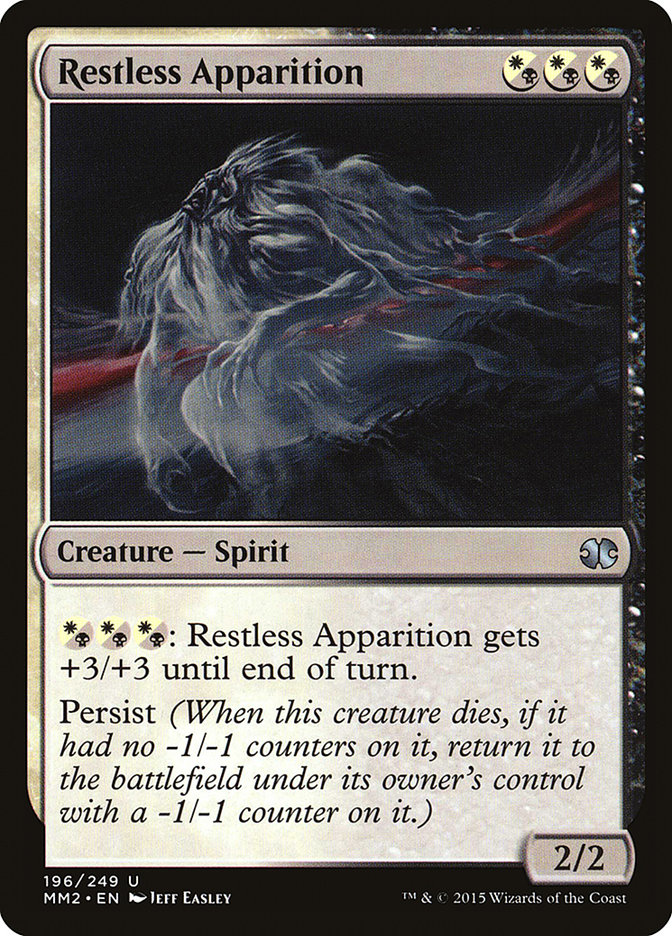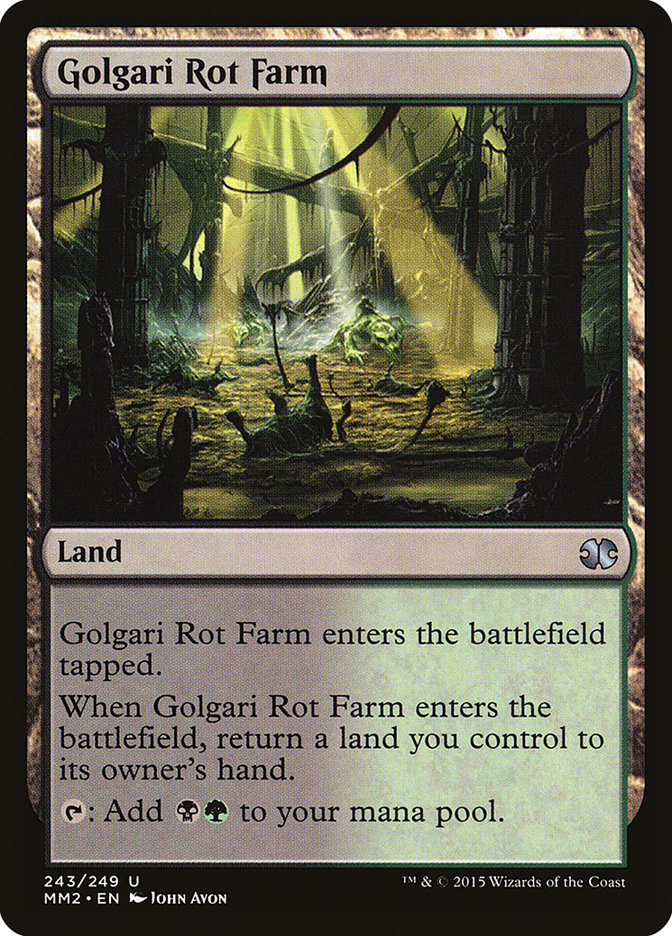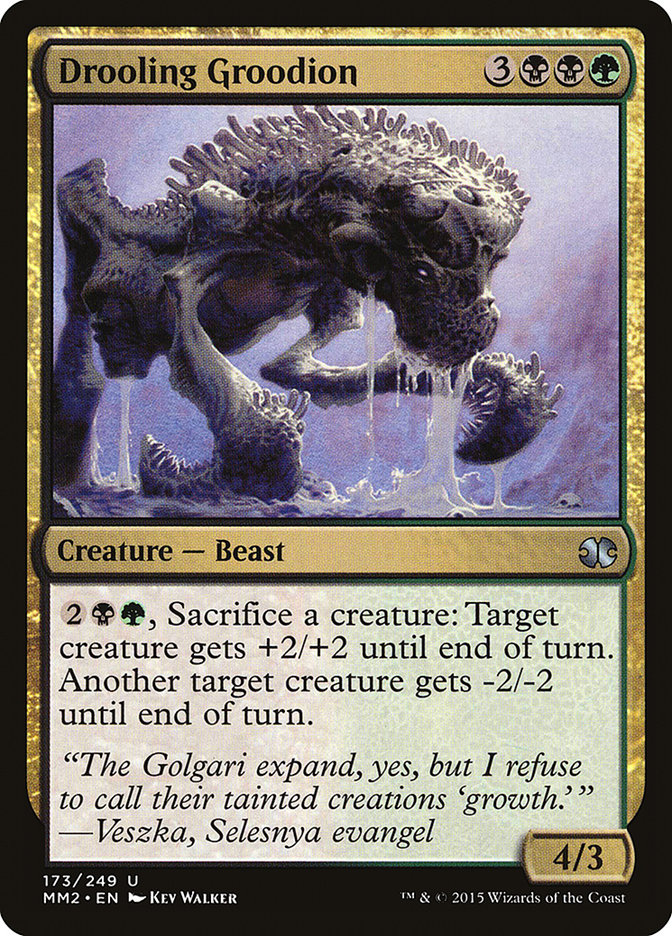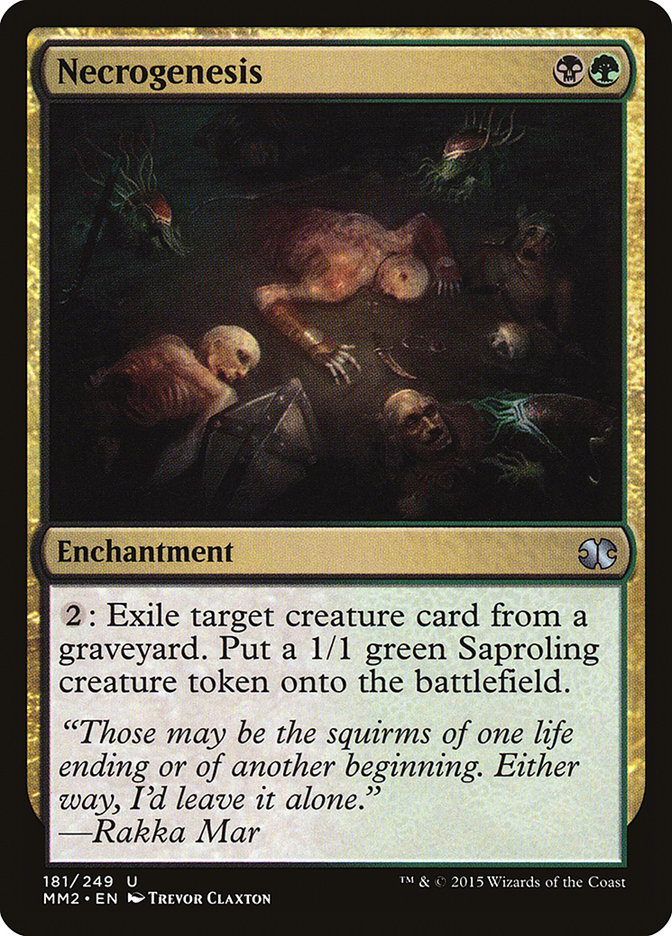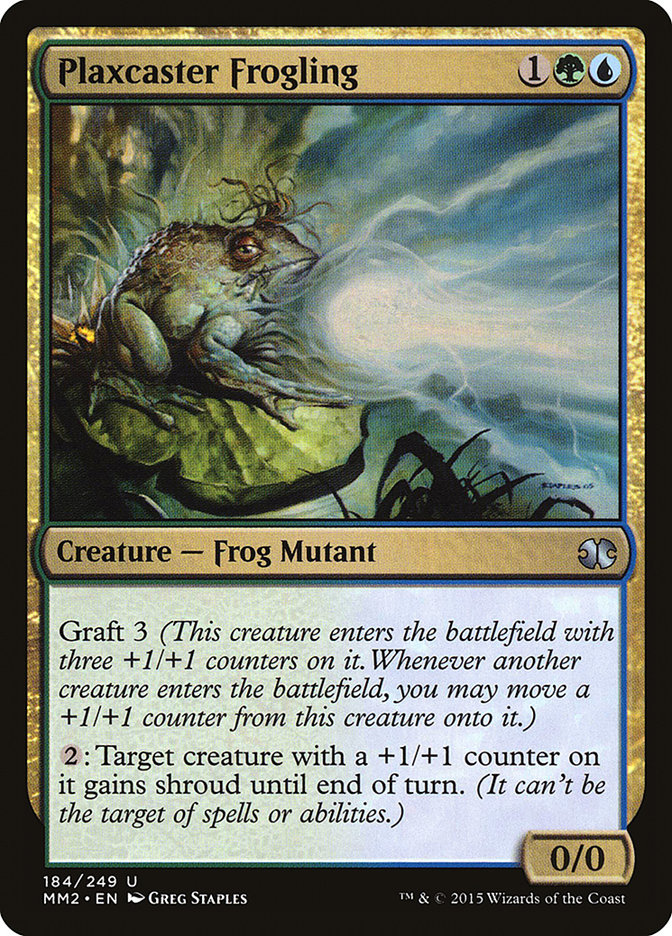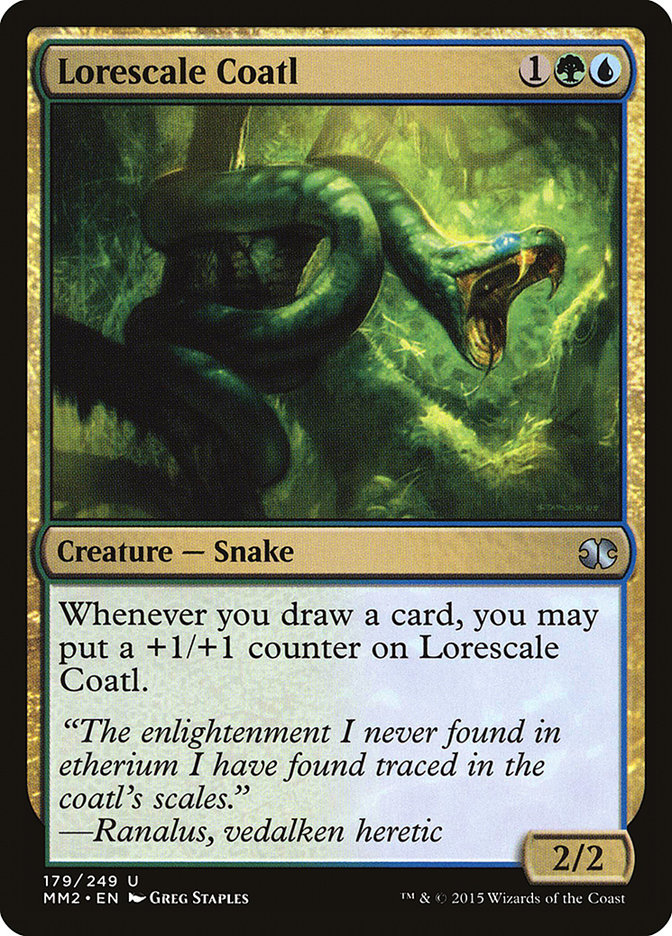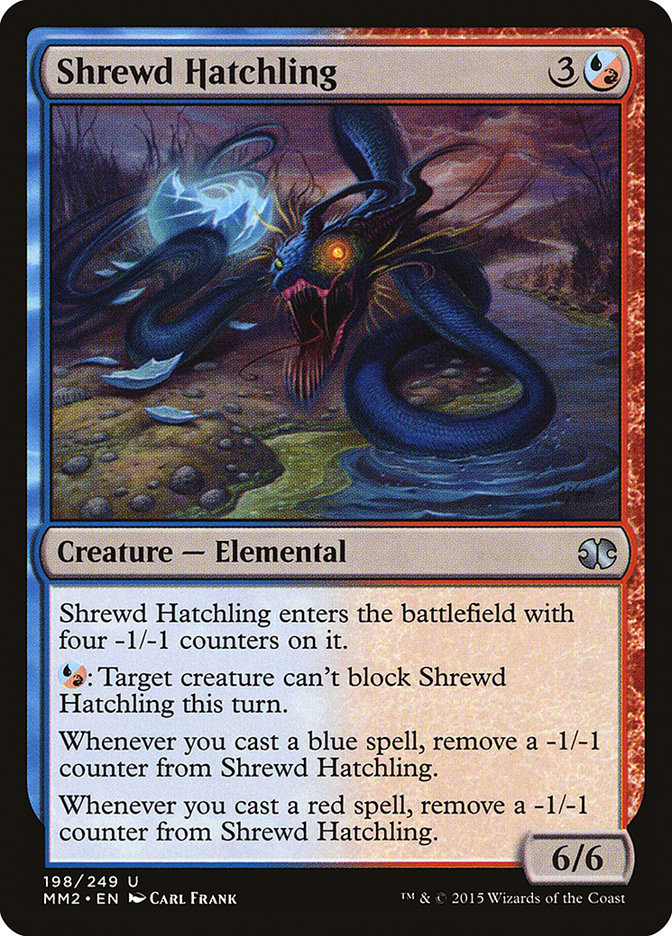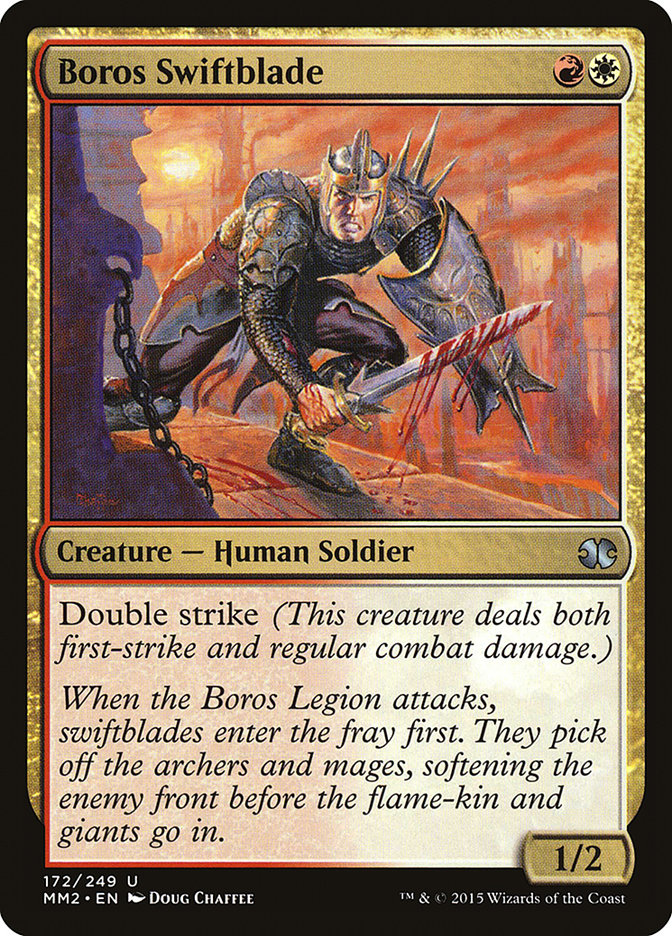Modern Masters 2015
is just around the corner, and with it, likely the largest Magic weekend of all time. Between Las Vegas, Utrecht, and Chiba, there likely will be around
15,000 people playing in a Grand Prix.
While Sealed is a big part of those events, the second nine rounds of each is Draft. More importantly to me and a significantly smaller set of people
(~0.15% of the previous number), Modern Masters 2015 Draft is likely to be a format at Worlds this year.
Given how well received Modern Masters was in 2013, I’m expecting good things from this installment. How does reality stack up against
expectations?
1. Modern Masters 2015 is far less linear than the original.
I noticed this immediately and at first tried to lay out the mechanics and get a real tangible assessment of why in terms of which are parasitic (Affinity)
and which aren’t parasitic (Bloodthirst), but it really isn’t super evident on first glance. There are slightly fewer parasitic mechanics in Modern Masters 2015 than in Modern Masters, but it’s only by a margin of one or two out of the ten mechanics.
The real change is mechanical bleed or overlap. Take a good look at Sam Black’s
article from last week
that
does a really great job of laying out the incentives and enablers for each mechanic. Then take a look at me doing the same thing for Modern Masters 2013. With
the exception of Changelings, most of the mechanical incentives and payoffs don’t overlap. If you are a black deck, your Stinkweed Imp is not playing well
with your Dreamspoiler Witches or Rathi Trapper or Warren Pilferers. It’s almost like each of the ten two-color combos is its own “color” of drafting where
besides the obviously insane cards, you just don’t want to take the cards that fit into another deck.
In Modern Masters 2015, there’s a lot of packetized interactions that spread further. For example, Thief of Hope is a Spirits card, but G/B
Sacrifice likes the soulshift to loop Nameless Inversion, and R/B doesn’t mind a body that provides reach and is more disposable in combat. The equipment
subtheme bleeds well into supporting Affinity on the white side, and B/R Aggro on the other side. Green’s token producers obviously enable the G/W “wide”
deck and G/B Sacrifice, but they also make it easy to spread graft counters and proliferate. While the dedicated Affinity/Metalcraft cards require more
support, something like Court Homunculus is actually reasonable in an equipment-heavy W/R deck.
Basically, it’s just a tighter ship than Modern Masters 2013. Less like Lorwyn, more like more recent formats.
2. The uncommons will signal open archetypes and tend to define the direction of your draft.
One reason for this: Each color gets eight uncommons for a total of 40. Counting bouncelands, there are three multicolored uncommons for each color pair,
plus nine artifact uncommons.
Another reason: The uncommons are just generally pointed towards archetypes. Of the mono-colored uncommons, a third to a full half of them are
synergy-based like Kor Duelist, Culling Dais, Bloodshot Trainee, or Devouring Greed.
Between these two things, you have a lot of high potential cards in the uncommon slot in every pack that are likely to roam the table into the draft pile
of the one person who wants them. Being that one person in position to take them is going to be huge, and knowing what cards are signals at what points is
going to be huge.
3. Creatures are small, removal is good.
Creatures are not the same as they are today in Tarkir draft in this format. Even just being a 3/3 is big. Similarly, the removal is very efficient and
hits a lot more. If everything is a 2/2 except expensive cards, Burst Lightning is going to be very good since it trades effectively for the three-drops
where tempo matters and just kills the big things that need to die.
This means that creature combat is going to be de-emphasized. Combat tricks are going to be fine but not super exciting. You are less likely to get a
two-for-one out of your Brute Force and more likely to be happy that it lets you keep a creature in play and cast another in the same turn. There also
aren’t a lot of Horned Turtle-style cards, which means I’m expecting more races than stalemates.
Removal being plentiful and good means burying your opponents in raw cards is also a lot easier. Not that you were going to, but don’t pass Mulldrifter
basically ever.
This also means that things that exponentially increase your board presence are great. Individual cards are all on the same low level. Pushing your stuff
ahead of that makes it really hard for your opponents to rectify the situation. Think proliferating a bunch of +1/+1 counters or just a good piece of
equipment.
4. Colors are flexible.
Evolving Wilds, Wayfarer’s Bauble, and Sphere of the Suns are all commons in Modern Masters 2015. Even if you aren’t green with Rampant Growths,
you can splash if you want to. Again, with the above point that the removal is really good, I would expect a lot of decks to be interested in this.
The removal also hasn’t been selected to really prevent this. You have the splashably-costed Narcolepsy and Nameless Inversion, not the double colored
alternatives like Victim of Night or Claustrophobia. As per above, even the size-capped removal is more generic as the creatures are smaller. If you don’t
draw your red source for Burst Lightning until turn 8, it’s still going to be great. Compare to Lightning Strike in Theros block, which if it was stuck in
your hand until a late red source showed up, might just be facing down Nessian Asp or some other monster it didn’t kill.
The situation is very similar to Dragons of Tarkir Draft. Don’t undervalue fixing, because the ability to play more good cards is very real in this format.
White
Common Creatures By Curve:
One Mana:
Two Mana:
Three Mana:
Four Mana:
Five Mana:
Removal:
Tricks:
White is probably the color where the themes overlap the least. Affinity is especially parasitic, and ideally, your Affinity deck won’t be playing any of
the average white creatures like Kami of Ancient Law. Tokens won’t be playing many random single body creatures. R/W Equipment and B/W Spirits both are a
little more traditional and flexible in what they play, but Equipment especially has some cards that just don’t make sense anywhere else.
That note on Affinity aside, I’m interested to see exactly how many artifacts you need to play Court Homunculus. I expect the answer isn’t actually that
many, and it’s very likely that something like R/W Equipment usually ends up with enough and wants an Isamaru-sized body.
I’m not really impressed by Raise the Alarm in this set without token synergies. There aren’t a lot of x/1s to catch on the attack (really just Sickle
Ripper, Soulbright Flamekin, and Plagued Rusalka), meaning it’s mostly going to be trading for 2/2s and not able to attack into them. See also: Dragon
Fodder in Dragons of Tarkir Limited.
The generic 2/2s, on the other hand, seem fine. Given that creatures don’t scale up significantly with cost and that the removal is cheap, bringing the
beatdown seems very real. At first glance I’m more interested in the lifelink payoff on Sunspear Shikari than the Demystify option on Kami of Ancient Law,
but the latter does answer four removal spells (Arrest, Narcolepsy, Pillory of the Sleepless, and Oblivion Ring) and trigger Waxmane Baku.
As a notice for people who weren’t playing then: Waxmane Baku was great in Champions of Kamigawa Limited. I’m not sure there are enough Spirit or
Arcane spells in this set to make it quite as good as it was when it was a 2/2 that could basically Falter or kill a creature, but even getting one or two
triggers is real nice. You can also proliferate Ki counters for what it’s worth.
Blinding Souleater? Another nice one. They don’t make Master Decoy anymore for a reason.
I’m not exactly sure which deck wants them, but the multiple white x/4s at common seem to be pretty reasonable if you are looking for a long game. I’m not
the biggest Moonlit Strider fan outside of B/W Spirits, as a rebuy on Waxmane Baku looks pretty dumb in the lategame, but I can see the protection effect
playing a role in the double strike equipment deck. Conclave Phalanx likely has a specific role to play, as I can imagine the Tokens deck using the early
turns trading life for time to develop the board then stabilizing with a 2/4 that gains a ton of life.
Sunlance seems great. One mana removal in a format of mostly interchangeable creatures. You are profiting on tempo even if you just trade it for a generic
two-drop.
On the removal note, I shouldn’t have to tell you that Arrest is great. Just don’t put it on a graft creature.
Things to do with Otherworldly Journey: Trigger Waxmane Baku, reset larger graft creatures after they spread out the counters, retrigger Aethersnipe or
Mulldrifter, add a counter to proliferate, make additional Spawn tokens with Kozilek’s Predator or Dread Drone. Certainly not the most exciting combat
trick now that damage doesn’t stack but definitely passable. Not really an archetype like it was in the last Modern Masters.
Mighty Leap is oddly positioned. If you are U/W, you are likely Affinity and don’t have a lot of slots for non-artifacts. If you are B/W, you would rather
have black removal or the Arcane Otherworldly Journey as your spell slots. If you are G/W, it’s an acceptable way to push through a giant Scion of the
Wilds, but it’s a card that isn’t good when you aren’t really set up. I expect this to be a sign of a deck that didn’t quite find a theme or a very typical
25th best card.
As a reminder: Any deck can play Apostle’s Blessing. I don’t expect many non-white decks to really want it, but if you think your B/R deck needs a trick or
something, you can definitely take it.
Uncommon Creatures By Curve:
One Mana:
Two Mana:
Four Mana:
Five Mana:
Removal:
Obviously First Pickable Uncommons: Oblivion Ring, Spectral Procession, Hikari, Twilight Guardian.
Don’t think Hikari, Twilight Guardian is actually a Spirit/Arcane theme card. There are five instants to flicker it with, of which only one is white,
meaning the ability is more “this gets vigilance” than “counter a removal spell on this.” It’s just an Air Elemental. Air Elemental is a good Limited card,
so don’t pass it just because you aren’t in B/W.
Myrsmith was always great in Scars of Mirrodin Limited, and it implies to me that some of the tokens synergies in white like Fortify are intended
to bleed over into the Affinity deck. If you consider that both are about flooding the board with undersized bodies, this makes some sense.
I expect Celestial Purge and the other color hate cards to go around somewhat late given that removal isn’t super scarce in this format. They are better
than a replaceable playable usually, but not better than an actually good card.
I’m not impressed with either of the equipment theme cards here. Taj-Nar Swordsmith is expensive and doesn’t have a real hit to find unless you have
Sunforger (I’m not excited to pay seven mana for a 2/2 and a 2/3 finding Sickle Ripper), and Kor Duelist without a Kitesail on it seems like a lot of work
for a creature that just gets chumped if it matters.
Blue
Common Creatures By Curve
Two Mana:
Three Mana:
Four Mana:
Five Mana:
Six Mana:
Removal:
Tricks:
Other:
The complete lack of early action here makes me think blue is going to be a support color in this format. The fact that very few of its mechanics are
especially parasitic (Affinity is basically its own color and only loosely blue) also means there isn’t a direct reason to play large numbers of blue
cards.
That said, blue does make up for this in strong yet splashable finishers. While it may not be true in current Limited formats, in ones similar to what we
see here the 3/3 flying body of Helium Squirter is fairly dominant, and Aethersnipe as a 4/4 is one of the largest common creatures. I would even be happy
to play Somber Hoverguard, just not necessarily if I’m paying full retail on it.
It’s worth noting in the context of Helium Squirter that graft is actually pretty good in this format, as making a 3/3 out of a 2/2 actually pushes the
creature into a different size range. I’m not 100% sold on Vigean Graftmage as the 1/1 it leaves around after the first graft isn’t a good body, and a 2/2
for three isn’t effectively costed, so unless you have a lot of synergies the card is going to be marginal.
Thrummingbird seems great, especially as getting a counter on it and making a Slith Ascendant out of it seems quite easy.
Cloud Elemental might be at an all-time low here. There aren’t Horned Turtles to hold the ground for the Skies archetype, being unable to block is a big
issue, and there are really not that many Wind Drake sized fliers the extra toughness matters against. The funniest thing to me is that it doesn’t even
“live” through the removal the third toughness should matter against as it becomes a 0/1 against Grim Affliction and Burst Lightning has kicker.
I’m guessing the number of artifacts you need to have where Faerie Mechanist goes from clunky to actually reasonable is probably around nine or ten. That’s
where you start being over a coin flip to draw a card with it.
Most of the blue spells are relatively unexciting. Narcolepsy is obviously a great removal spell, and Repeal is a fine trick, but that’s about it. There
isn’t a lot of blue aggressive support for Vapor Snag, Steady Progress is narrow, Stoic Rebuttal and Mana Leak are acceptable but deck dependent on having
things to do with untapped mana, Telling Time is very much filler, and Wings of Velis Vel is approximately Mighty Leap.
Uncommon Creatures By Curve
Four Mana:
Five Mana:
Six Mana:
Eight Mana:
Removal:
Other:
Obviously First Pickable Uncommons: Mulldrifter, Air Servant.
Don’t pass Mulldrifter unless you are absolutely sure there is no way you are going to cast the card or the rare is that good. It’s a three-for-one that
advances your boardstate and is splashable. Air Servant is also shockingly splashable for a giant flier.
Water Servant is also really good, but it’s not quite the same tier as the previous cards. It’s just massive, not evasive or card advantage.
Again a reminder: Tezzeret’s Gambit is castable in any deck. It might even be better in some Jund-colored deck than in any blue deck.
I have a feeling Novijen Sages is going to be clunky and more cool than actually good. By the time I am casting a six-drop, how many things do I have left
to graft to? Note that with Helium Squirter the difference is that it granting flying is a significant upgrade to anything you topdeck.
Black
Common Creatures By Curve:
One Mana:
Two Mana:
Three Mana:
Five Mana:
Removal:
Other:
Black has a strong low end attributable to the B/R aggro deck, but it also has a lot of grindy cards going late. Even the fastest black decks will have a
reasonable number of tools to keep up even if the game starts dragging on.
Vampire Lacerator and Plagued Rusalka both seem great to me. The former lines up well on tempo against the relatively flat sizing of the format, while for
the latter I just have great memories of Plagued Rusalka making every combat step exceptionally awkward. It’s also worth noting that Plagued Rusalka is one
of the few creatures you can Soulshift back off of Thief of Hope, so it may operate as a smaller version of Nameless Inversion there.
The two-drops are much less exciting. Duskhunter Bat is great if you get the counter, but the limited number of one-drops in the format means that it will
rarely be cast on turn 2. The other two-drops are more fragile x/1s that can be picked off by a number of cards like Gut Shot. Bloodthrone Vampire is
obviously an archetype card (note: likely one that wants Apostle’s Blessing), but outside of the dedicated decks for it, I’m not impressed.
It’s worth noting that both of the black five-drops are rather fragile. Their benefits come in the card advantage they provide. Dread Drone was just okay
in Rise of the Eldrazi Draft, and that was a format without many ways to really punish the x/1 body. In a lower to the ground format like this
one, I’m not expecting a lot out of the card. Scuttling Death is a little better, but since the change to combat damage stacking since its first run, it’s
likely a lot worse than I remember it being. It does help that both of the black three-drops are good and Spirits, but you will no longer get the wonderful
three-for-ones the card used to be able to do.
There’s a lot of removal in black, but it’s a mixed bag. Grim Affliction and Nameless Inversion are both in the top commons of the set, but it drops off
from there. Bone Splinters seems extremely archetype specific to G/B, where it is admittedly great. Instill Infection is clunky for what it is actually
doing, and Shrivel is just a sideboard card.
Beyond the removal, I’m a pretty big fan of the two-for-one spells. As I keep saying, in a format where the bodies are relatively interchangeable and the
removal is good, burying people in card advantage is a real thing. I remember Death Denied being backbreaking for a common in Kamigawa Limited, and Sign in
Blood has always been solid.
Uncommon Creatures By Curve:
Two Mana:
Three Mana:
Four Mana:
Removal:
Other:
Obviously First Pickable Uncommons: Dismember, Spread the Sickness
Beyond the obviously great removal, I might be underselling the uncommon four-drops here. Not only are there relatively few four-drops in the set, but both
were historically strong in their original formats. Scavenger Drake gets real big real fast, and a 4/4 lifelink Vampire Outcasts is massive for the format
and quite hard to beat in the heads up.
Devouring Greed is a card I’m going to have to play the format a bit to figure out. It was top notch in Champions Draft, often as an eight to ten point
burn spell, but in this format I’m hard pressed to think it goes much above six in most cases.
Something I didn’t mention with the previous common x/1s: Watch your sideboard on both sides. If your opponent has a Daggerclaw Imp, take another look at
that Gut Shot. If your Daggerclaw Imp gets Gut Shotted, consider sideboarding to blank that card.
Red
Common Creatures By Curve:
One Mana:
Two Mana:
Three Mana:
Four Mana:
Removal:
Tricks:
Other:
Red is odd. The spells point to quick aggression, but the creatures don’t necessarily back it up.
The early drops aren’t good. Goblin Fireslinger is not really worth a card in most decks. Smokebraider is relatively unexciting. There aren’t a lot of
Elementals I’m interested in splashing, and the massive creatures also aren’t Elementals. Soulbright Flamekin is mostly a Goblin Piker.
Viashino Slaughtermaster is the only one that seems like a nice two-drop for a lot of reasons. There are a few things to punish the effective 2/1 over 2/2,
but the upside of double strike is nice. To spoil a bit, I’m also expecting a lot of green decks to splash, meaning that G/R splashing black removal is
likely even if you aren’t full on Domain.
The threes are a little more promising, which implies the red deck is a bit bulkier than you would assume at first glance. Blood Ogre is the obvious winner
here, both oversized for the format and first strike to make blocking almost impossible. First strike alone on Dragonsoul Knight also points towards a card
designed to hold the small ground creatures before a larger threat takes over, possibly itself if you can activate it. The last three-drop also supports a
bigger game by providing a mana sink. Inner-Flame Igniter is pretty average or worse on time, but it trades well enough and provides a powerful effect
going late.
To top off the idea of a bigger aggro deck, Gorehorn Minotaur is massive. 5/5 beats all but three other commons, and two of those cost eight to make bigger
(Ulamog’s Crusher and Kavu Primarch), and the other is conditional on a massive board (Scion of the Wild).
Similarly to black, there’s a lot of removal, but the quality falls off quickly. Beyond Burst Lightning, there aren’t a lot of exceptional options.
I think Tribal Flames for two is actually semi-reasonable, which means I’m likely willing to play this card in non-Domain decks that are splashing to get
it to a potential Volcanic Hammer.
Gut Shot is another one of those 25th cards. I do mean 25th, as in it’s never the last cut you debate, but it’s always something that gets laid out at
first. Again, as with all Phyrexian mana spells, anyone can play it. In particular, don’t forget this one, as it is an effective sideboard option.
Fiery Fall costs about a million in this format. The mana curves of all the colors just come in way underneath a removal spell at this cost, and you aren’t
getting a lot for the increase in size, especially when the actual big creatures are bigger than five toughness. If you don’t want this card for the
fixing, this isn’t an exciting spell to cast.
The other spells should remind you that all of my talk about how big Red is or isn’t going doesn’t detract from the fact that it should be attacking. None
of the non-removal spells are defensive at all, and notice that most of the removal goes to the face.
Of the other spells, I expect Brute Force to be the one that overperforms (interchangeable cards means that tempo is huge), and Blades of Velis Vel to be
by far the worst. Depending on how the Draft metagame goes and how much people start durdling Goblin War Paint might be good, and at the least Wrap in
Flames is a sideboard option to sweep a bunch of x/1s.
Uncommon Creatures By Curve:
Two Mana:
Three Mana:
Four Mana:
Six Mana:
Removal:
Obviously First Pickable Uncommons: Lightning Bolt, Skaargan Firebird
Skaargan Firebird is a 6/6 flier that recurs. I feel like it’s a card people might not realize is a first pick until they just die to it.
Spitebellows is also pretty high up there. Worth noting here that the removal mode for the card is both the most common in practice and costs double red,
meaning the card isn’t quite as splashable as basically every other removal spell in the set.
Bloodshot Trainee is deck dependent within being archetype dependent. Getting the second additional power on this card requires specific cards, with
Sickleslicer being the most reasonable common way to do so.
See the note on Duskhunter Bat for Stormblood Berserker. This is secretly a three- or four-drop that costs two mana. Not enough one-drops exist to cast it
on turn 2 as a 3/3.
As for the other two rarity downgrades, Worldheart Phoenix is unbeatable if you can recast it, but I’m really unsure of Incandescent Soulstoke. I’m not
expecting to use the Sneak Attack mode often, which means this is basically just an Elemental Lord. That alone might be enough, but multiples of this are
the only reason I’m seeing to be a dedicated Elementals deck.
Green
Common Creatures By Curve:
One Mana:
Two Mana:
Three Mana:
Four Mana:
Five Mana:
Removal:
Tricks:
Other:
Green probably has the most actual bricks of any color. Between marginal cards and archetype specific ones, you really have to be in the right spot to
draft it. Cards I’m not actually excited to play include: Simic Initiate, Tukatongue Thallid, Sundering Vitae, Plummet, Commune with Nature. Cards that are
archetype/deck specific: Vines of Vastwood, Sylvan Bounty. Cards that look deck specific but could easily just be the norm in any playable green deck:
Matca Rioters, Scion of the Wild, Thrive, Rampant Growth.
The good news is that a lot of the themes have solid overlap. The token enablers fuel G/W Swarm and G/B Sacrifice directly, tokens plus Thrive gives U/G
Graft + Proliferate a lot of action, and honestly I wouldn’t be surprised if G/R was often better as an Inner-Flame Igniter tokens aggro deck than the
five-color deck that appears to be pushed. Notice those are all basically “Tokens are good,” meaning Kozilek’s Predator and Scatter the Seeds are the
actually relevant green cards that should be the signals to move in. I might even go as far to say if you pass a Scatter the Seeds, you probably shot a lot
of your hopes of being a green deck. Nest Invader belongs here as well, though just two bodies doesn’t necessarily fully enable some of the token specific
cards. See: Hordeling Outburst versus Dragon Fodder in Standard.
The other good news is that even if you are short on playables, the green fixing helps make up the difference. I expect the majority of green decks to be
base two-color splashing at least another one for some awesome removal or creatures.
On the above note, Matca Rioters is likely to be underrated at first until people realize that it “just being a 3/3” is actually fine. Three mana 5/5 is
living the dream, three mana 3/3 is still great in the format. On the other hand, the removal in the format makes me skeptical of Scion of the Wild until
it is at least a 4/4. Otherwise it is too easy to get Scion into combat and have it shrunk to a measly 2/2 by your other relevant creature dying.
Gnarlid Pack is great. 2/2 on time, 3/3 that holds the fort in mid-game, biggest thing around later. Probably the most generically powerful green common,
though that still means the synergy cards are probably picked ahead of it.
As for Rampant Growth and Sylvan Bounty, I really don’t want to be the deck that is A) doing nothing on turn 2 to do this and B) has over twenty mana
sources. The other decks in this format are removal and beats, or removal and card advantage, neither of which really plays into the Rampant Growth and
play a bigger thing plan. I’m expecting the ramp decks to underperform unless their card quality is really high. Don’t be afraid to get greedy there, you
need each of your cards to be worth more than your opponent’s to make up the tempo loss.
While I don’t like maindeck Plummet in this format, it’s worth noting you can graft to their creature with Helium Squirter to set up killing it with
Plummet.
Uncommon Creatures By Curve:
Four Mana:
Five Mana:
Six Mana:
Seven Mana:
Tricks:
Other:
Obviously First Pickable Uncommons: Bestial Menace
This probably doesn’t do justice to the fact that green has a lot of just good uncommons. Bestial Menace seems particularly game-breaking, but Cytoplast
Rootkin and Root-Kin Ally are both reasonably costed and unreasonably sized threats. Pelakka Wurm also is also excessively large, just not as easy to cast.
I have memories of Overwhelm just being the exact opposite of its name both times it was printed before. Don’t get tricked again. Tapping your attackers to
cast your Overrun is not good.
Algae Gharial though… that card is something else. Here is a textbook Algae Gharial play pattern from Shards of Alara Limited.
Step 1: Oh, it’s just a 1/1, I can beat them wasting a turn.
Step 2: Wait, now it’s a 4/4? Can I really attack into that?
Step 3: I guess I can attack and hope to pump spell over it. Wait, no they just block with their other creature and trade.
Step 4: Why does that have shroud? Why is it bigger than my entire board put together?
Mutagenic Growth is likely best as a red card.
Artifact/Colorless
Common Creatures By Curve:
One Mana:
Two Mana:
Three Mana:
Four Mana:
Five Mana:
Seven Mana:
Eight Mana:
Other:
Colorless is almost its own color in this set, though honestly it feels more like an extension of blue. Thoughtcast in particular is the real draw to an
artifact-heavy deck. Sphere of the Suns is especially nice here, as you can easily be “base” blue double splashing and use it for both Metalcraft/Affinity
and to make all of your removal work out. Skyreach Manta and Alloy Myr also support this multicolored artifact deck, though I suspect that Manta is going
to disappear into more normal decks with splashes that would be happy with a five mana 3/3 flier.
While many of the artifacts are deck specific, Cathodion seems like an early grab in basically any deck, as the Nessian Courser-sized body is great in the
format, and there is no longer a mana burn drawback on the card. Sickleslicer is another generically fine artifact creature, basically an exchangeable
three- drop that gives marginal value going late. This is a strike against red, which is leaning heavily on a good three slot that due to these artifact
creatures isn’t exactly color specific or unique.
The two-drops here are also fairly reasonable. Runed Servitor is just a Grizzly Bears with a neutral ability, Glint Hawk Idol is fine as Wind Drake with
upkeep if you have white mana, and Gust-Skimmer is similarly fine with blue. Having flying prevents the tokens that account for about half of the things
that tag x/1s from mattering.
A note on Metalcraft: If you are playing Rusted Relic, you want a minimum of fifteen artifacts. Seventeen is more likely ideal. Seethis old GerryT post from right before he smashed me in the finals of a Grand Prix drafting Metalcraft.
I’m not sure what percentage of decks will actually be able to cast Ulamog’s Crusher, but it seems unbeatable if it resolves. I guess it’s probably just a
green card that also fits in any artifact deck with Sphere of the Suns and Alloy Myrs. Also don’t forget that if you have one in a deck that can’t normally
support it, you can always sideboard it in if you need a real trump.
On the various equipment: I don’t mind the Living Weapons. Kitesail has always been underrated as a way to bash with a large creature like Timbermaw Larva
or in this set Gorehorn Minotaurs or Bloodthrone Vampire. Copper Carapace is clunky and likely just bad.
I expect Evolving Wilds to be at an all-time high in this set. It’s already great in Dragons of Tarkir Limited, and the same logic of splashing
removal and bombs being good applies more here.
Uncommon Creatures By Curve
Four Mana:
Nine Mana:
Removal:
Other:
Obviously First Pickable Uncommons: Tumble Magnet
At the aforementioned Scars of Mirrodin Grand Prix, we spent the seven hour car ride to Nashville discussing what we were willing to do for a
Sealed pool with three Tumble Magnets. We didn’t get as far as trading body parts, but it wasn’t far off. The card is really insane for all the reasons
normal tappers are, except this basically has haste.
Cranial Plating was easily the best common in Mirrodin block Draft. I don’t think every deck will have enough artifacts in this set to support it, but if
you have seven or eight, the card just being Bonesplitter with upside is more than enough. Note the with upside part, which is especially relevant. If you
are ever the actual artifact deck, this thing is just as unbeatable as it is in Constructed. Darksteel Axe is not quite as good in the best case scenarios,
but it’s in a similar ball park.
Mortarpod could also secretly be in the insane uncommons club. At the least a Mogg Fanatic that does more is really good.
Culling Dais has a lot of archetypes to fit into. It’s fine in aggressive decks, artifact decks, and tokens. I would not be surprised if this card shows up
in a lot of maindecks and doesn’t table.
I’m not really seeing Eldrazi Temple working. If I open a Kozilek, Butcher of Truth, I would rather just have an on-color land so I can cast my spells and
not die before paying ten mana to win the game.
By the way, bouncelands are great and basically two-for-ones. To make this obvious, imagine a hand with two basics, a bounce land, and four spells. Drawing
a single land here lets you cast five-drops, while drawing another land in the normal 3-4 split hand only lets you get up to four mana. In Ravnica
Draft, you played the ones that were only single on-color. Tim Aten once
posted a joke article about a mythical draft deck with 11 bouncelands and 4 basics
, and when that deck was tested by people, it turned out to actually be pretty good.
Expect these to creep up pick orders fairly quickly. Remember that playing sixteen lands is fine with two or three of these, and if you have four, playing
fifteen is typical.
Archetypes
U/W:
The primary U/W deck is obviously supposed to be artifacts, but I’m not sure if those decks actually want to be straight U/W over blue double splash. White
does have a couple nice incentives plus Arrest as a common you actually want to splash for, but base-blue Grixis is almost more appealing there.
The secondary U/W deck I see utilizes Moonlit Strider and Conclave Phalanx in a Skies strategy. This deck is likely base white, leaning heavily on the
early white dorks to not be overran, and wants equipment to pump the not so large fliers it is attacking with.
Overall, U/W seems like an unexciting color combination, especially with how bad Thrummingbird is here.
U/B:
U/B is somewhat a proliferate deck, but more so just a good cards deck. Use the combined card advantage of both colors (Sign in Blood, Mulldrifter) and the
reasonable nlue finishers to win. Black fills in the earlygame and does a lot of the chip shotting with Soulshift and common card advantage. This archetype
is probably fine, if less exciting than the best synergy options. I would say this deck can splash, but I’m not even sure what cards it wants to splash for
with the amount of removal black brings.
B/R:
B/R is a pretty hard-hitting aggressive deck that has good early, mid, and lategames. Black again carries the early curve, while red brings the rest of the
heavy hitters. I would not worry too much about specific synergies here and just build a strong Zendikar style deck with a curve, removal, and
some good things to cast if you get to the later game.
With black removal to keep your opponent on the back foot, and cards like Death Denied to rebuild a board, I expect the way to beat this deck is not to try
and maintain one-for-one parity.
G/R:
The maindeck here is a Ramp deck, but I’m not necessarily high on the full Domain plan. There isn’t a Kodama’s Reach that finds two colors at once here. My
guess is that the five-color cards are splashed off an Alloy Myr or your deck is base Jund with maybe some blue cards most of the time.
The deck I want to draft is a G/R deck that maximizes Inner-Flame Igniter with tokens. Green has a lot of good two-drops to support an aggressive strategy,
and there are cards like Vines of Vastwood that are probably good here and easy to pick up as they aren’t great elsewhere.
G/W:
G/W’s big plan is swarm. This is the Fortify and Scion of the Wild deck. Honestly, the white cards aren’t too impressive in that plan, and I’m wouldn’t be
shocked if this “archetype” was usually just 9 Forests, 5 Plains for Fortify, Arrest, and Blinding Souleater, and 2-3 of your splash land for more removal.
B/W:
B/W’s theme is Spirits, but I’m more inclined to say the real plan here is beatdown. Waxmane Baku is doubly at its best here, both in terms of being good
with more counters and being good when attacking. I wouldn’t go crazy with the Arcane synergies, but it’s nice to know that cards you would cast anyways
just get better.
There are also a lot of ways in white to force through Bloodthrone Vampire. Moonlit Strider’s protection, Mighty Leap, and Apostle’s Blessing are three at
common. There may be a Fortify sub-deck here with these and Dread Drone. This is also a color combo where the instant equip on Cranial Plating is workable
and you might have enough artifacts to play the card in the first place.
G/B:
G/B is a grindy, board flooding, sacrifice/tokens deck. Or more realistically, that deck with splashes.
I don’t really like Bloodthrone Vampire here though. There aren’t a lot of ways to push the card through, and you are creating a board stall. The sacrifice
cards I like are Plagued Rusalka and Bone Splinters, which let you use a mass of creatures to actually control the board. The other card likely at a high
point is Kavu Primarch as a common giant threat.
This is also the Eldrazi base, mostly because you have Kozilek’s Predator and Dread Drone as ways to simultaneously ramp and impact the board. Just don’t
think you are ever casting Emrakul, the Aeons Torn. Stick to the ones that cost eleven or less unless you are in the market for a card that is basically
Elixir of Immortality.
Note that Necrogenesis is insane. It plus Algae Gharial was the actual unbeatable combo from Shards of Alara Draft, and now I get to do it all
over again.
U/G:
This is the actual proliferate deck, or really Thrummingbird deck. Graft or Thrive counters around, increment them over time, beatdown with giant
creatures. The big issue here is going to be the deck being light on removal, but you are green and want to splash black for Grim Affliction if possible
anyways.
In terms of actual synergy, this is probably one of the best decks. The issue is that there are only so many proliferate cards going around to make it
actually happen, and only Thrummingbird as a way to repeatedly do so. More often than not this deck will bleed into G/B value, largely depending on which
specific cards you see at which point.
U/R:
The shared mechanic here is Elementals, but as I mentioned, I don’t really know what Elementals I’m trying to Smokebraider into. Aethersnipe early isn’t
that much better than Aethersnipe a little later. More likely this deck is just bad two-drops and not enough action to pull back when you get curved out on
early.
R/W:
This deck is designed as the equipment plus double strike deck, but I’m not buying it. The amount of good removal in the format means that building a big
threat is very likely to get you blown out. I expect that to just be a smaller part of a semi-artifact based beatdown strategy. There are some issues with
the deck, like lacking a lategame and having an excessive amount of three-drops, but overall it isn’t bad.
First impression? Modern Masters 2015 seems like an insane Draft format. There’s a lot of the Innistrad-style flexible enablers, meaning
each draft is going to be very intricate and unique. There’s also a lot of cool sideboard cards that aren’t backbreaking, which means each match is
dynamic. While I can’t make it to Grand Prix Vegas, I’m excited since that just means I don’t have to practice Sealed and can Phantom Draft all day long.

